Decebal Scriba
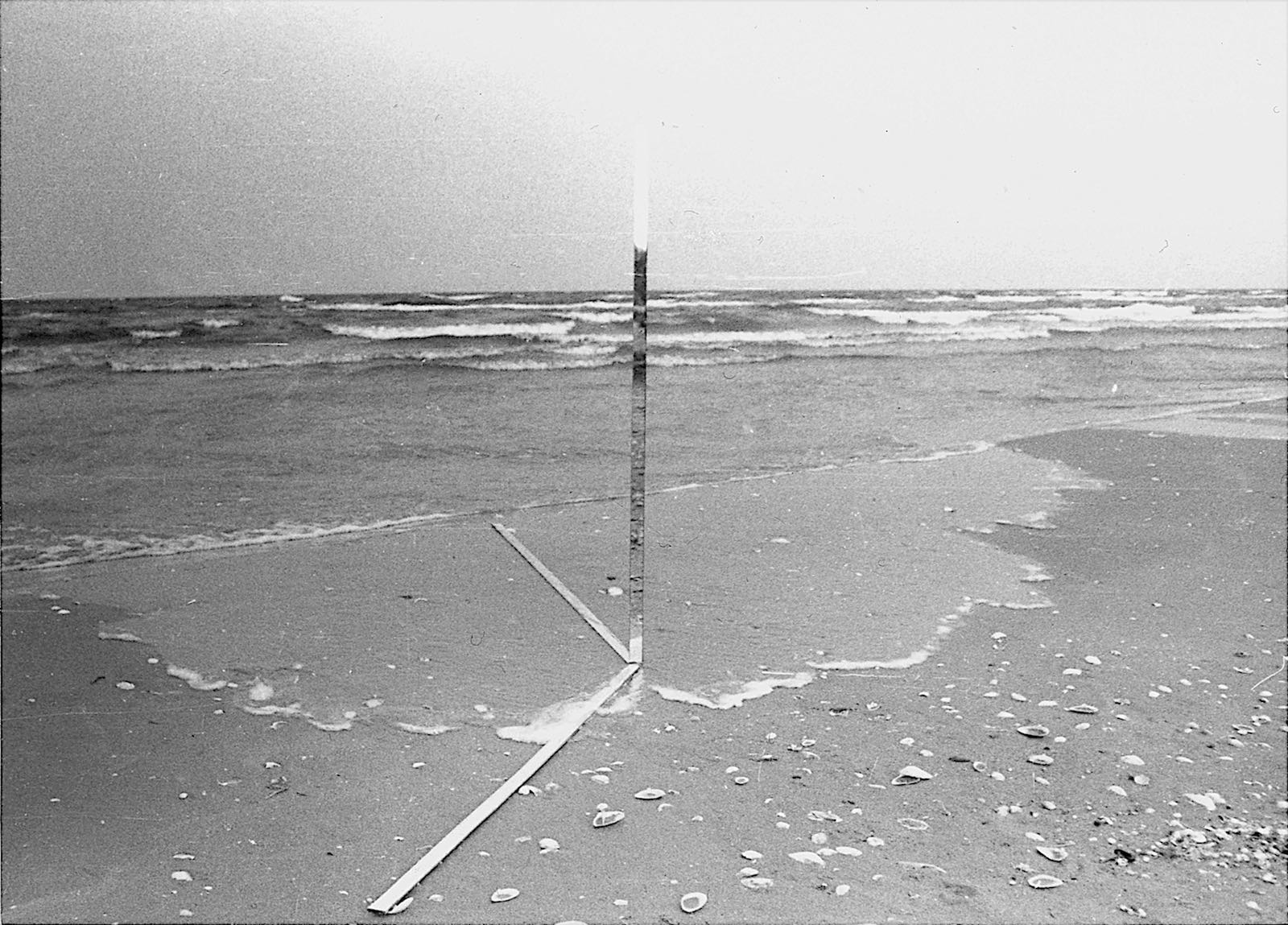
Image: 3,9 x 5,6 inch
Frame: 21,5 x 25,5 cm
Titled, signed and dated at the back
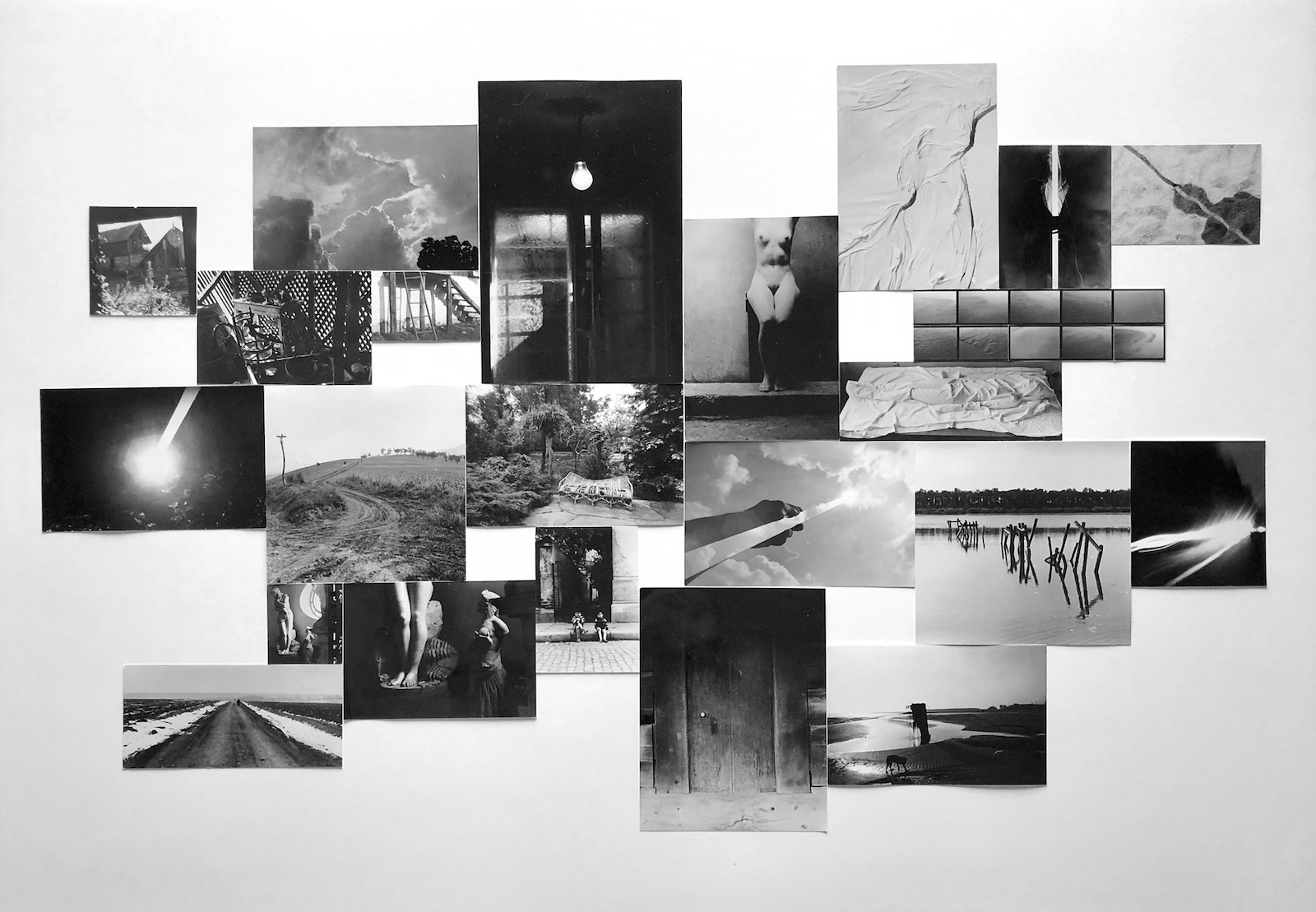
Image: Various sizes (pannel 80 x 120 cm)
Paper: 80 x 120 cm
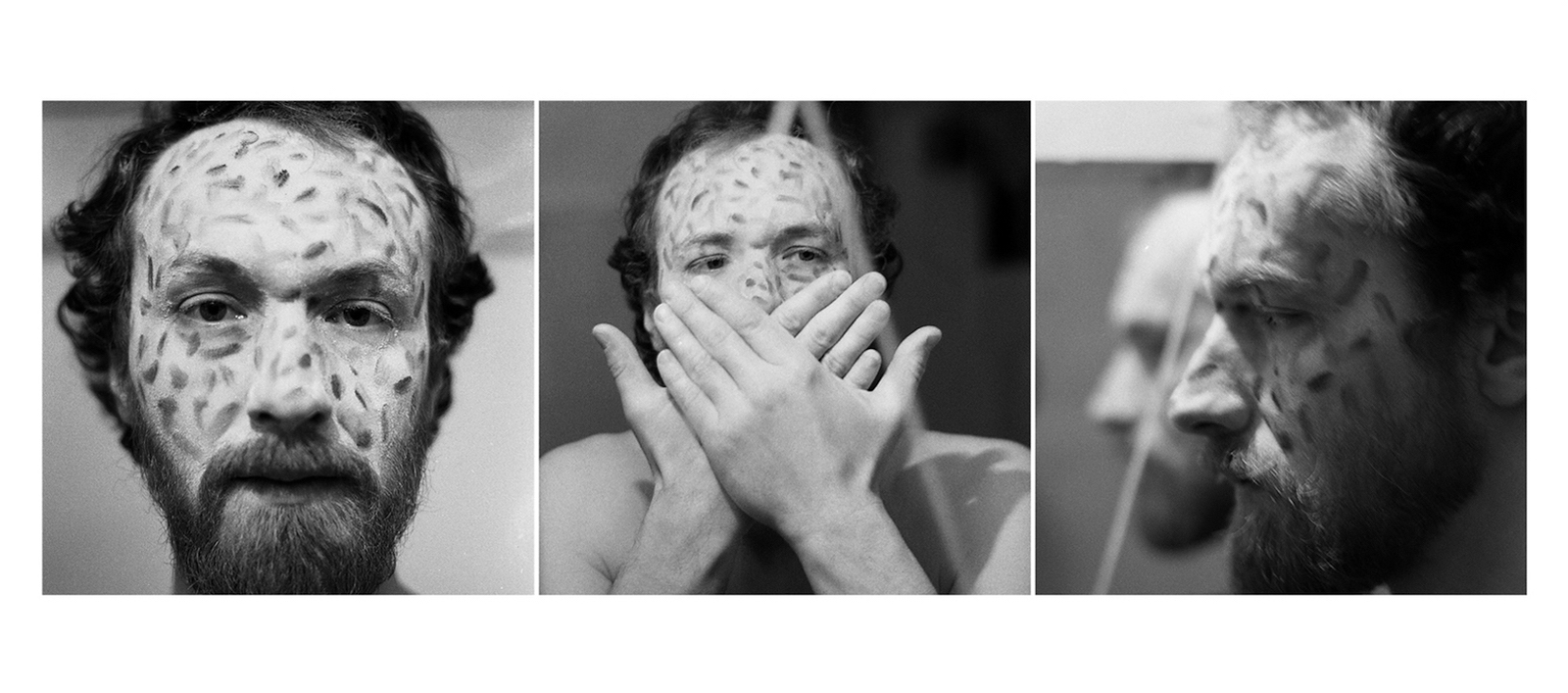
Black and white gelatin silver prints - Triptych
Image: 45 x 45 cm (each)
The "Masks" series is marked by a strong political dimension, staging symbolically the constraints generated against Romanian intellectuals in times of dictatorship, especially artists.
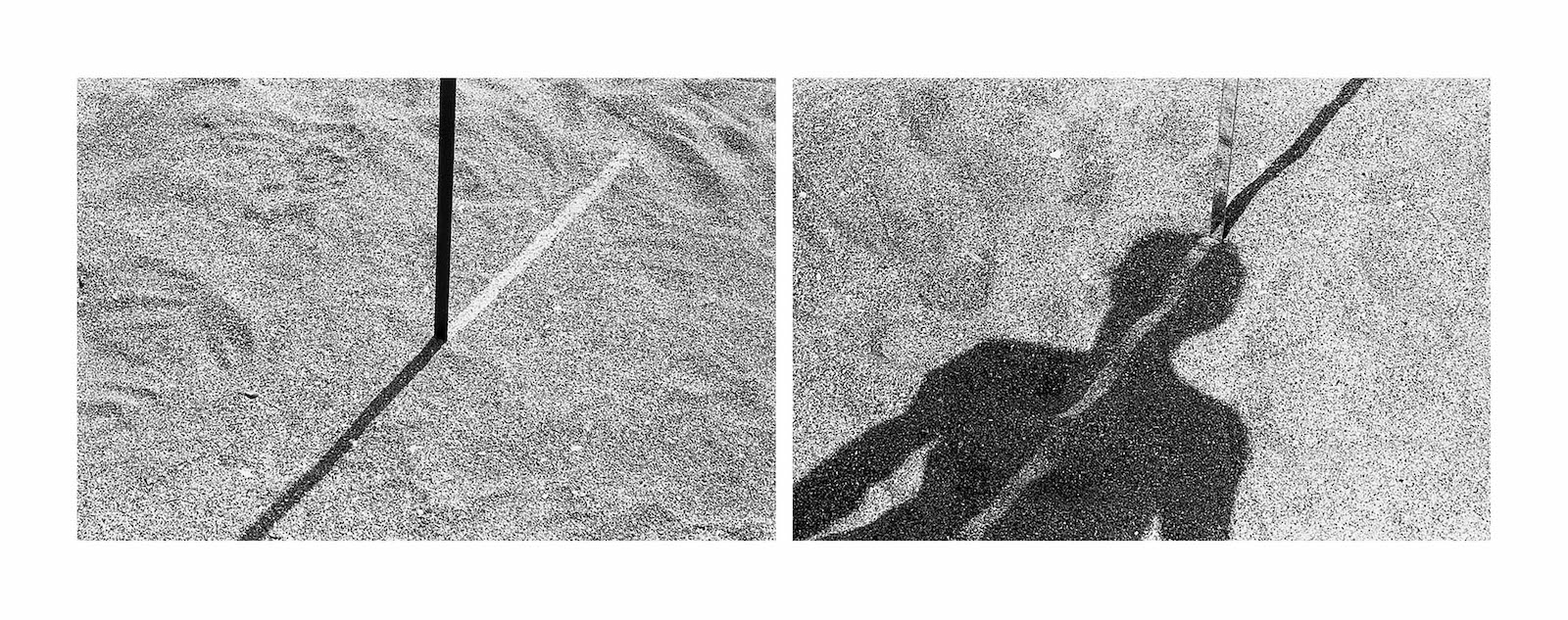
Black and white gelatin silver prints - Diptych
Image: 30 x 45 cm (each)
Frame: 40 x 101 cm
Axis #01 témoigne de la manière dont la dimension conceptuelle inhérente au travail de Decebal Scriba peut transformer, compléter, déconstruire aussi bien que reconstruire le signifiant au sein de l'oeuvre. Cette dématérialisation qui s'opère vient perturber l'espace et les éléments s'y trouvant, amenant ainsi une réflexion philosophique autour de la notion de réalité.
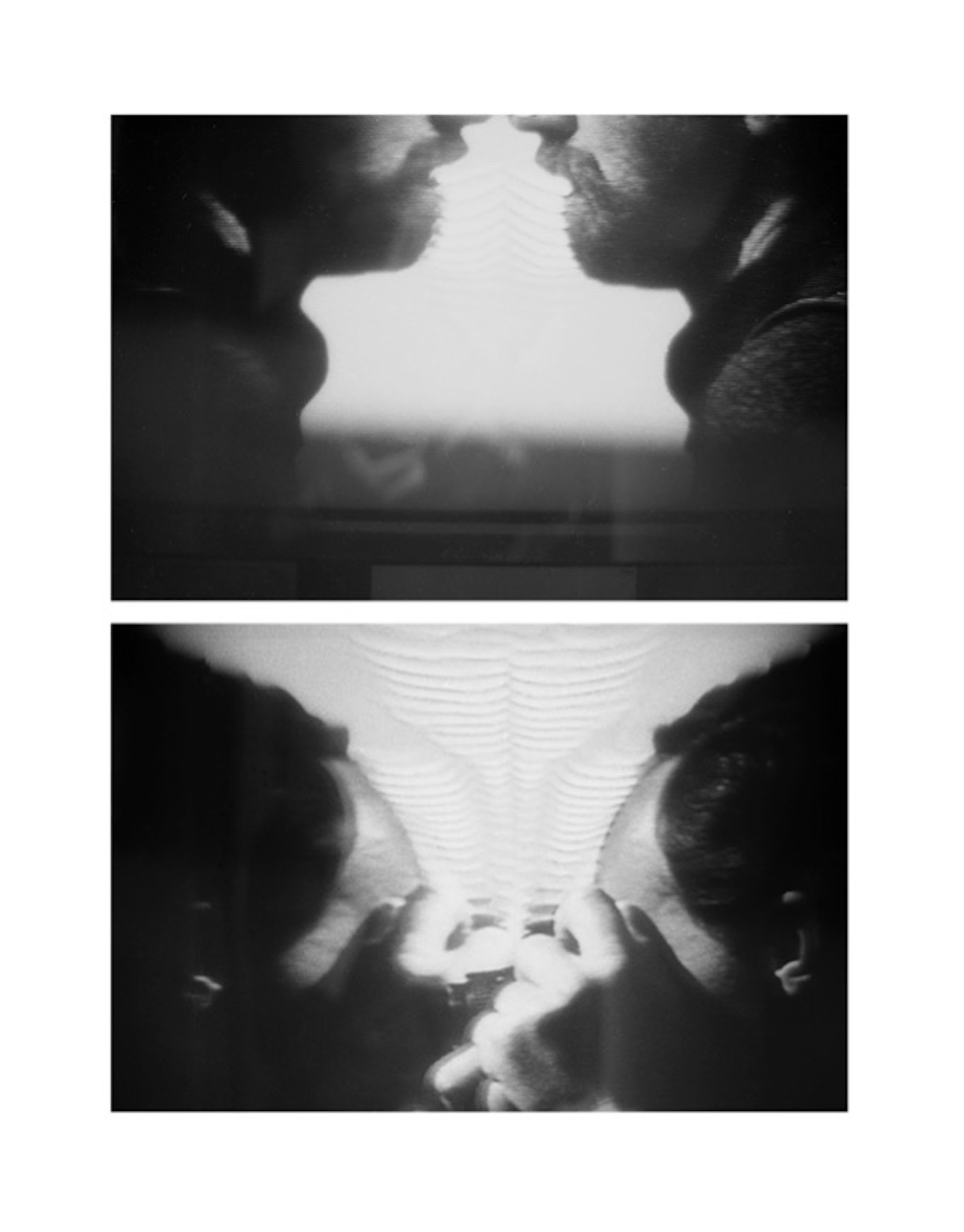
Frame: 92 x 70 cm
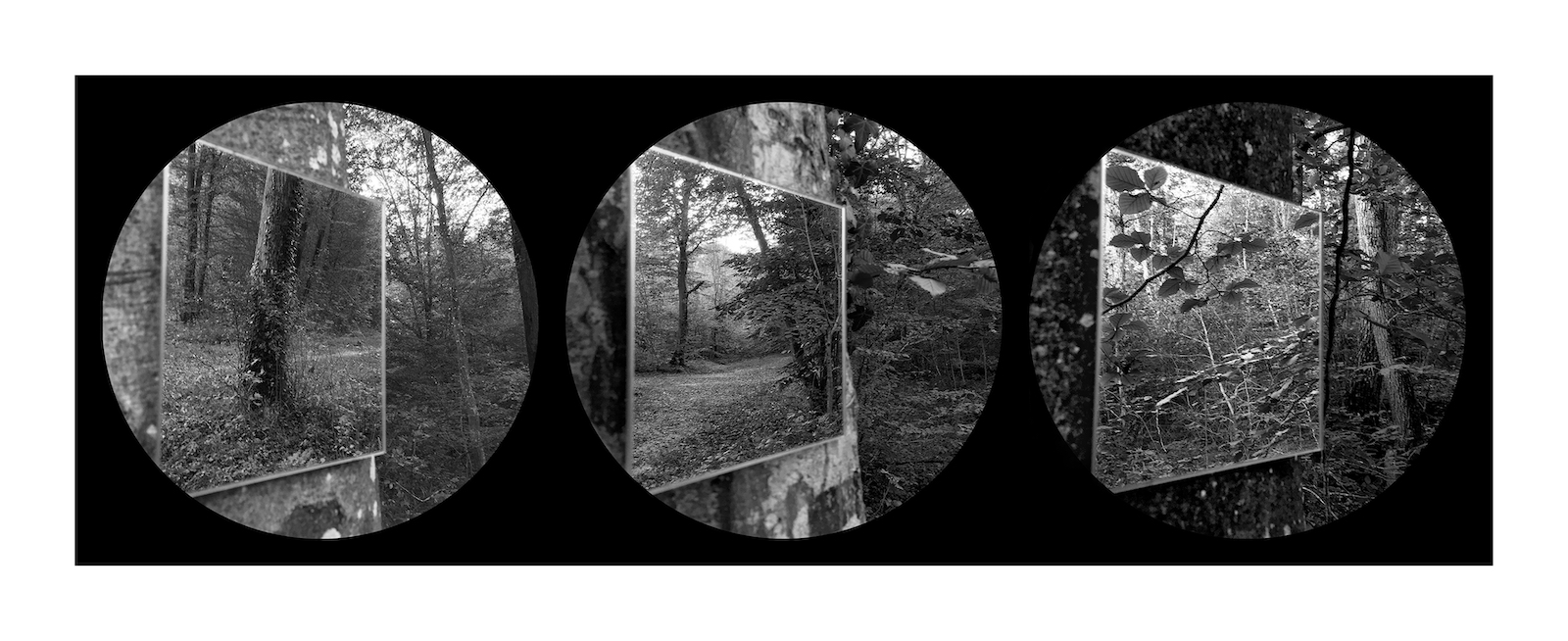
Image: 47 x 115 cm
Paper: 50 x 118 cm
Crossings est un ensemble de trois photographies réalisées en pleine forêt dans lesquelles l'artiste utilise un miroir distordant la perspective en mélangeant les champs. Cette oeuvre s'inscrit dans la série Miroirs initiée dans les années 1980, où Decebal Scriba perturbait l'espace à l'aide de miroirs, intervenant sur sa représentation, proposant ainsi une réflexion autour de la perception du réel et la notion de réalité.
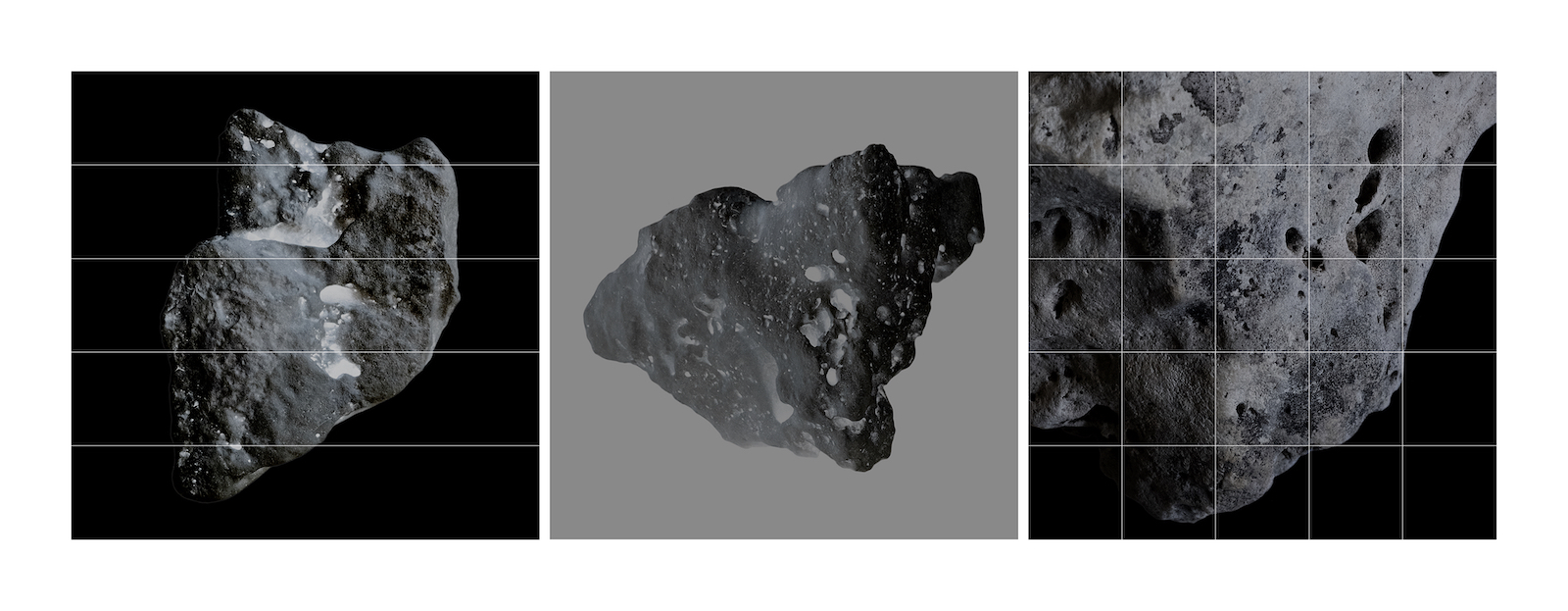
Paper: 47,5 x 121 cm
Frame: 50 x 123,5 cm
The Thing #1 émane des recherches de Decebal Scriba sur la nature de la matière et de son intérêt pour la physique et l'espace. À partir de photographies de pierres, l'artiste manipule l'image en convoquant une esthétique scientifique et projette un objet terrestre commun dans l'espace, de sorte à suggérer des astéroïdes étranges.
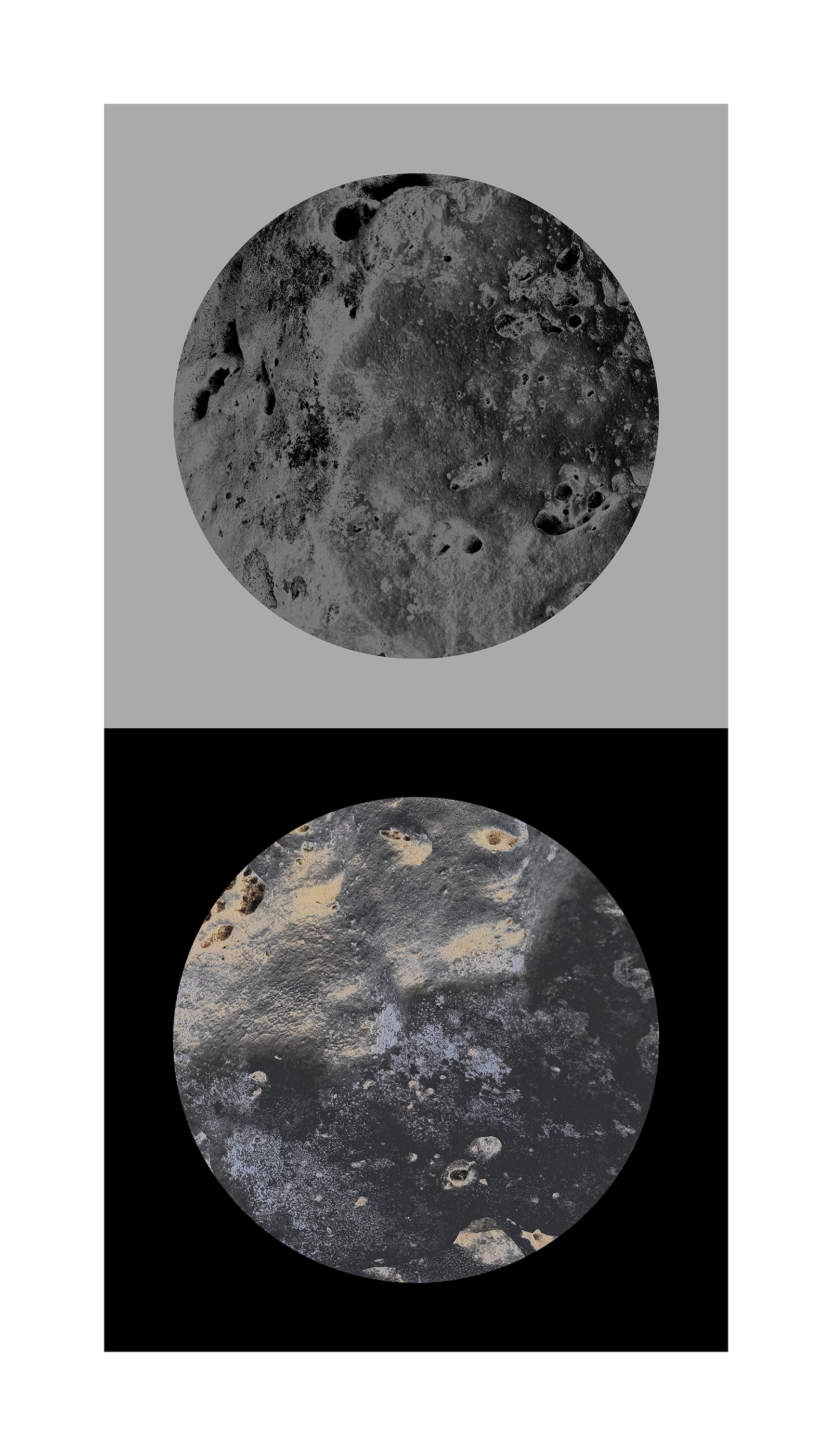
Image: 84 x 48 cm
Frame: 87 x 51 cm
The Thing #2 émane des recherches de Decebal Scriba sur la nature de la matière et de son intérêt pour la physique et l'espace. À partir de photographies de pierres, l'artiste manipule l'image en convoquant une esthétique scientifique et projette un objet terrestre commun dans l'espace, de sorte à suggérer des astéroïdes étranges, menaçants, dans une ambiance partagée entre fascination et angoisse.
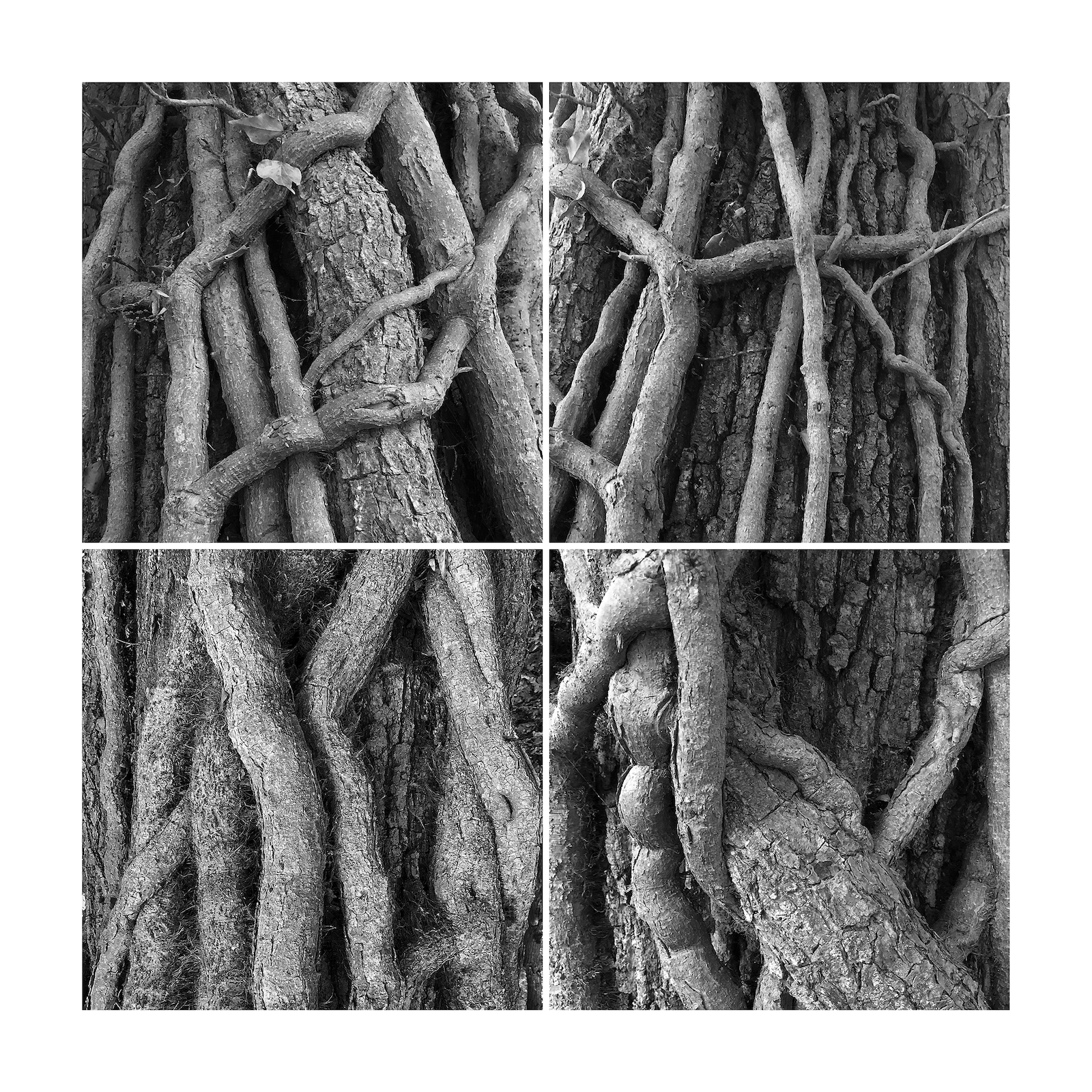
Image: 83 x 83 cm
Paper: 85,5 x 85,5 cm
Untitled rassemble quatre photographies d'un arbre envahi par le lierre. Considéré depuis toujours comme l'ennemi des arbres, le lierre profite de la structure du tronc pour se nourrir et se développer. L'arbre étouffé devient ici métaphore, non sans rappeler certaines oeuvres historiques de l'artiste autour de l'oppression et du muselage, comme dans la série des Masks.
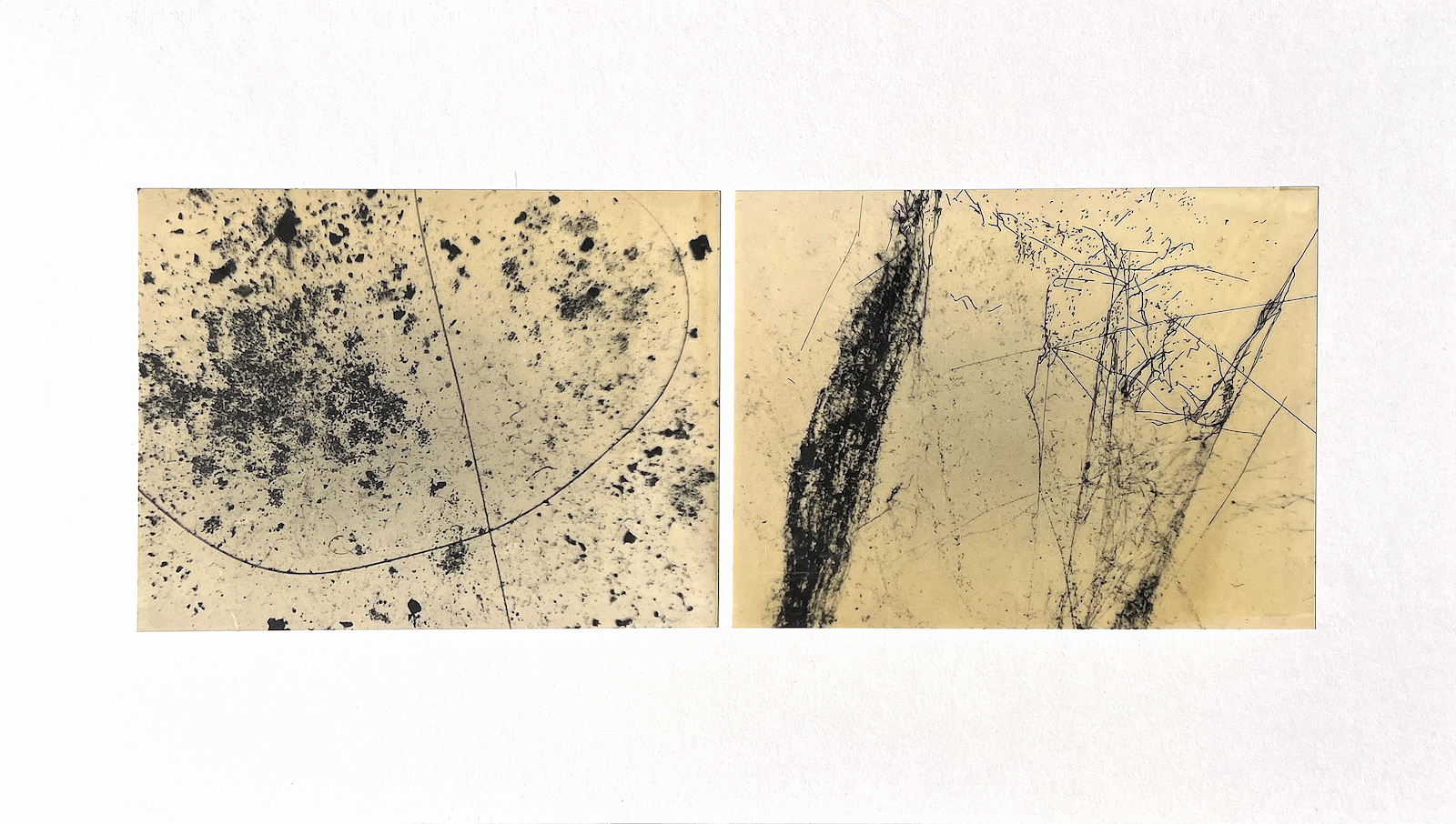
30 x 52 cm
Tiltled, dated and signed at the back
Matériau protéiforme, malléable et souple, symbole de pureté et sujet de méditation métaphysique chez Descartes ou Aristote, la cire est utilisée depuis des siècles par de nombreux artisans et artistes. Elle est aussi une source de fascination pour Decebal Scriba dont beaucoup de travaux tournent autour de la matière et son évolution.
Dans Traces #1, l'artiste immerge d'anciens tirages argentiques montrant des toiles d'araignée dans la cire d'abeille. Ce faisant, il propose une réflexion sur la modification de la perception suite au changement de matérialité d'un objet et ses possibles interprétations.

36 x 49 cm
Tiltled, dated and signed at the back
Matériau protéiforme, malléable et souple, symbole de pureté et sujet de méditation métaphysique chez Descartes ou Aristote, la cire est utilisée depuis des siècles par de nombreux artisans et artistes.
Partant d'un accident d'atelier, Traces #2 explore la plasticité de la cire brûlée en développant une série de signes semblables à des cratères. Ces accidents contrôlés renvoient à l'aspect expérimental de la pratique de Decebal Scriba autour de la matière, questionnant les possibilités d'expression ou la signification philosophique du matériau sous divers états.
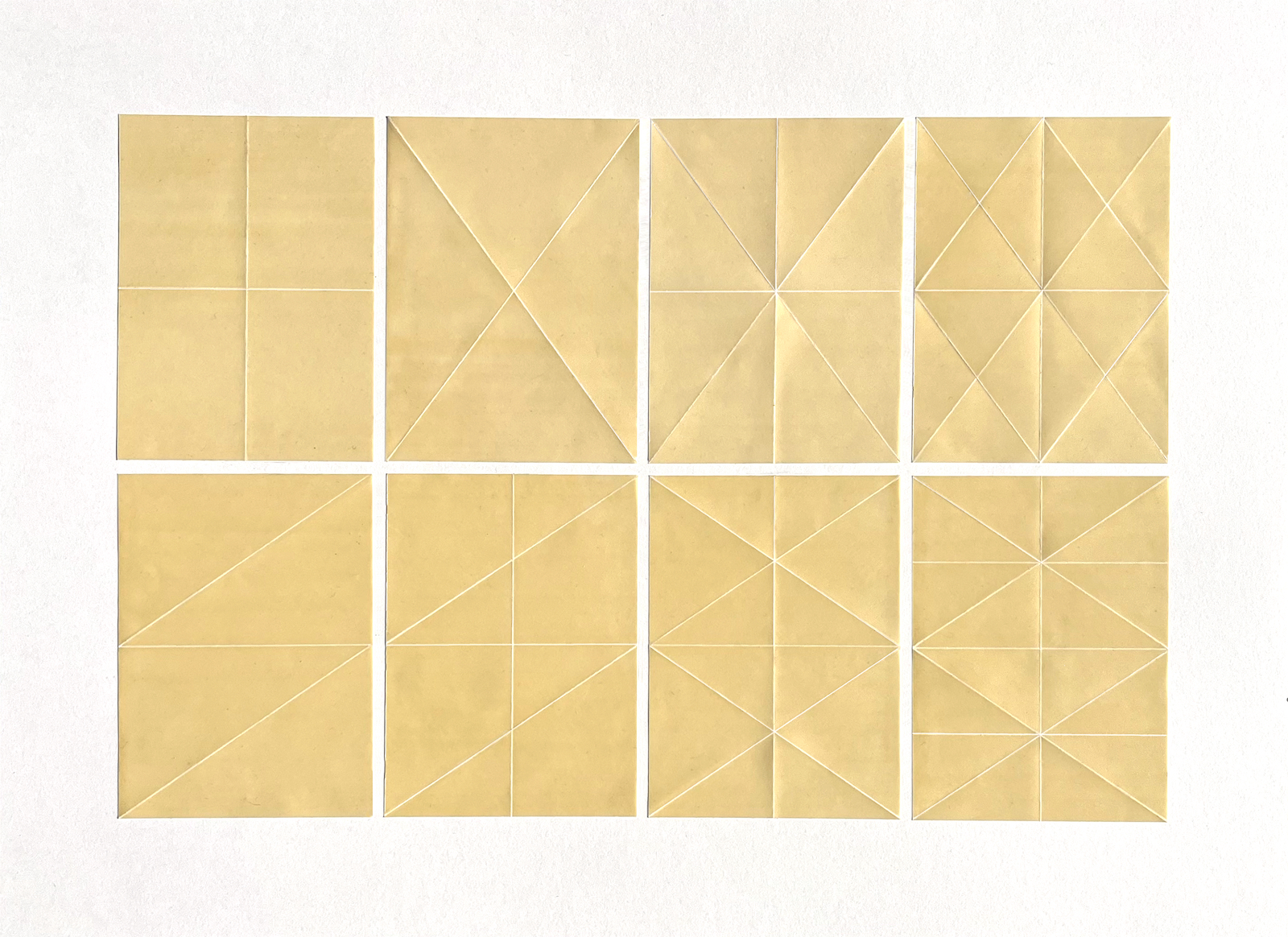
41 x 56 cm
Tiltled, dated and signed at the back
Wax has been used for centuries by many craftsmen and artists. It is a protean, malleable and flexible material which symbolizes purity, and has been a subject of metaphysical meditation by Descartes or Aristotle.
In Untitled, Decebal Scriba uses sheets of paper impregnated with beeswax to highlight geometric traces preserved by the action of folding. In this way, he draws attention to the contrast between the plasticity of the material and the rigidity of the line.
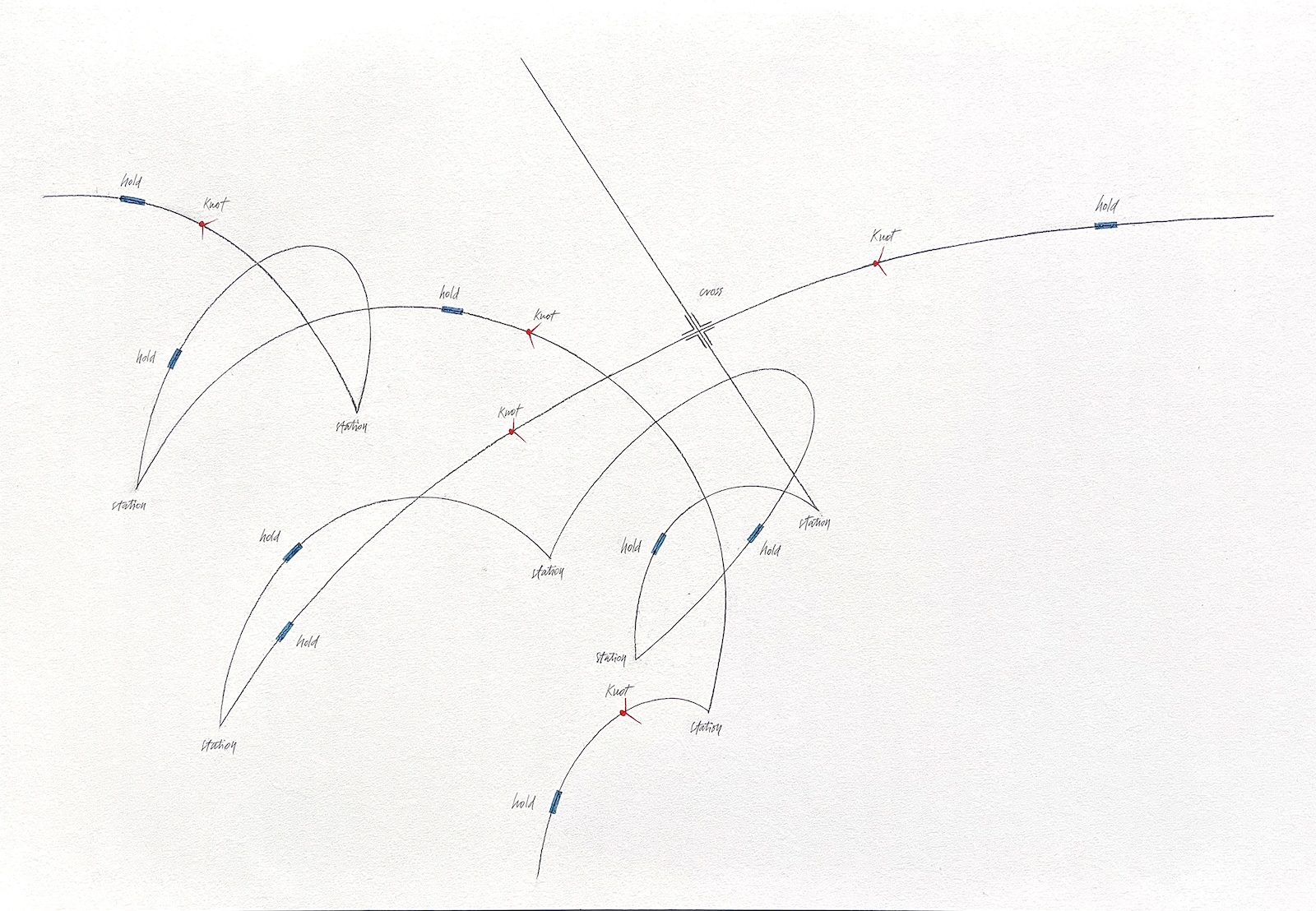
55,5 x 79,5 cm
Tiltled, dated and signed at the back
Installation project (Knots) réunit deux grandes thématiques du travail de Decebal Scriba : la physique des particules et les réflexions philosophiques autour de l'existence. L'artiste imagine des trajets virtuels, qui rappellent des trajets de particules. En prolongeant la réflexion, il suggère un possible parallèle avec des trajets existentiels, formant une chronologie composée de dilemmes, d'erreurs, de linéarité et de désordre.

79,5 x 55,5 cm
Tiltled, dated and signed at the back
Installation project (Veil) est une tentative de conceptualisation d'une construction en mouvement. L'oeuvre combine un élément vertical semblable à un mât, comme axe de l'installation, avec un pourtour de traits suggérant un réseau de vibrations. L'artiste tente ici d'esquisser une représentation d'un objet complexe sans pour autant suggérer une échelle ou un modèle référentiel, pour mieux toucher l'essence des choses.
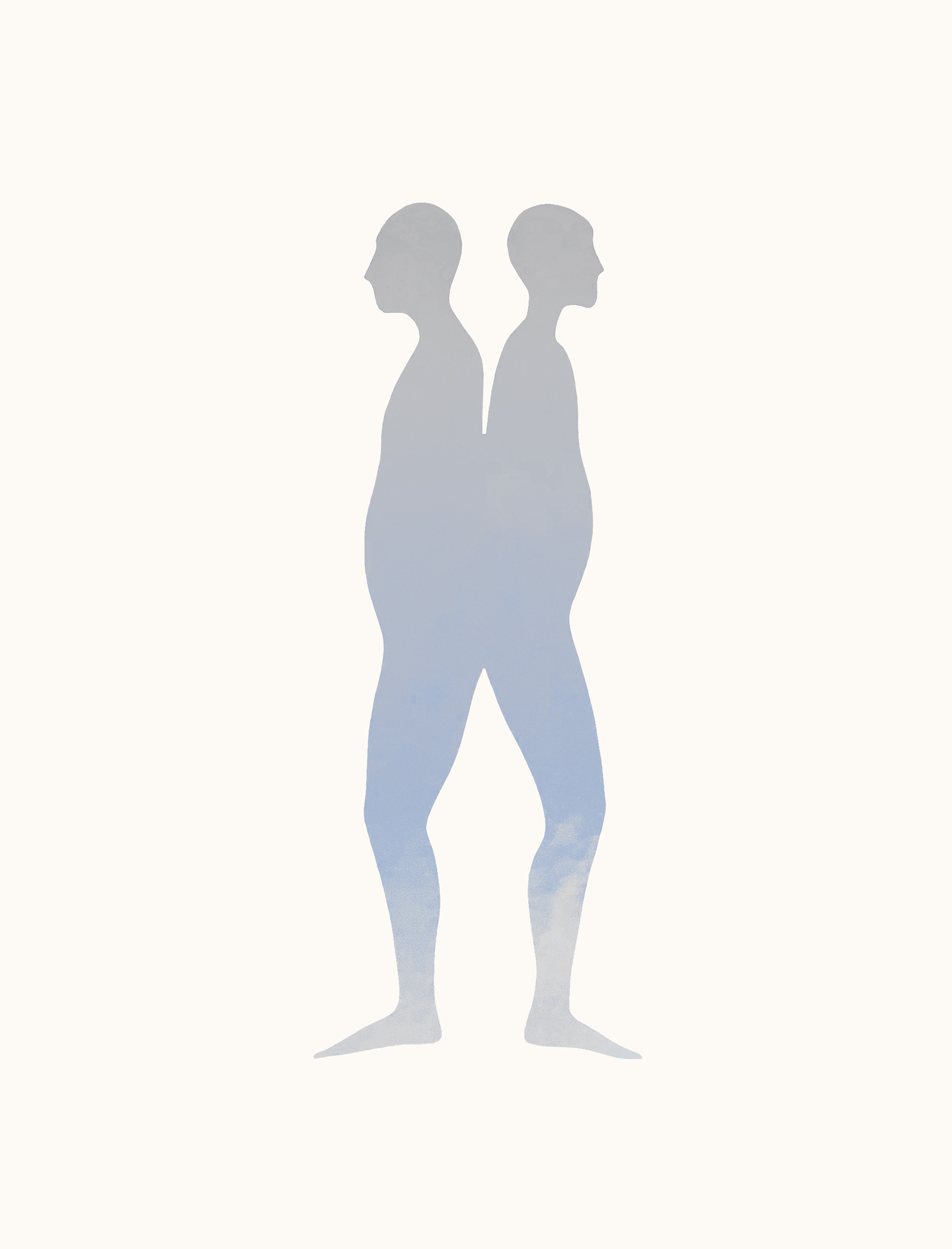
64,5 x 49,5 cm
Tiltled, dated and signed at the back
Doppelganger #01 fait partie des d'expérimentations récentes de l'artiste, évoquant la recherche de soi et la dualité de la personnalité. Au travers de différents matériaux récurrents dans son travail, Decebal Scriba décline deux silhouettes placés dos-à-dos, renvoyant à la notion d'altérité au sein de notre propre individualité.

64,5 x 49,5 cm
Tiltled, dated and signed at the back
Doppelganger #3 fait partie des d'expérimentations récentes de l'artiste, évoquant la recherche de soi et la dualité de la personnalité. Au travers de différents matériaux récurrents dans son travail, Decebal Scriba décline deux silhouettes placés dos-à-dos, renvoyant à la notion d'altérité au sein de notre propre individualité.
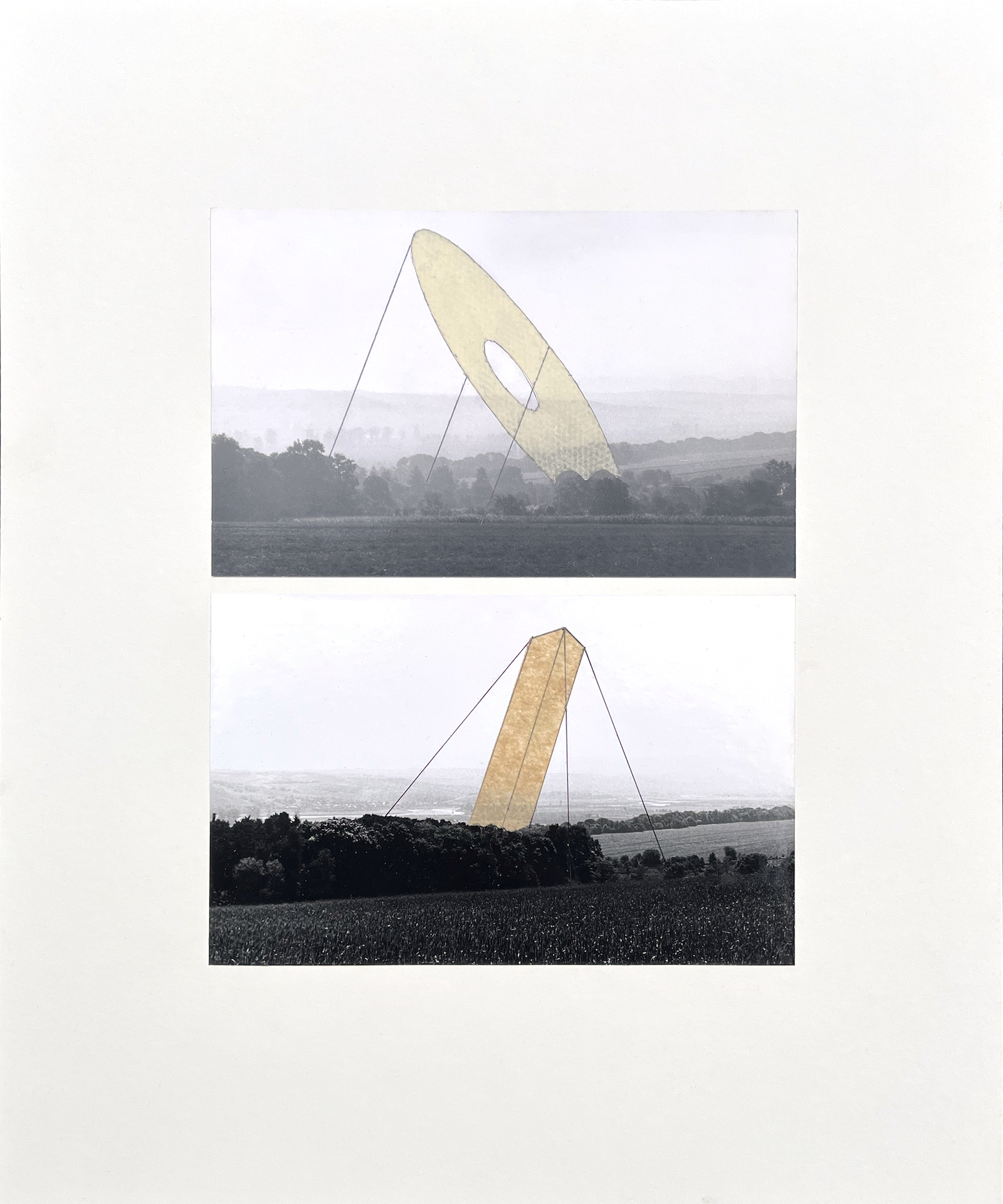
35 x 29 cm
Titled, dated, signed at the back
L'oeuvre Installation projects est constituée d'interventions sur tirages argentiques, représentant des projets d'installations monumentales pour deux interventions éphémères dans un paysage existant. En imaginant un disque et une colonne dans l'espace, Decebal Scriba modifie le paysage et interroge la place du signe en tant que repère visuel.

52 x 52 inch
Damnatio Memoriae is composed of twelve lead foils craved of bar numbering. This system, while reflecting to the imaginary of a prisoner in a cell counting its day, represent 1979 calendars, announcing the darkest chapter of Romanian history. The artwork documents the sociocultural state of this period, oppressing and condemning artist to artistic immobility and oblivion.

Image: 11 x 17 cm (each)
Liquid Matrix proposes a study of light, already presented in Lucidograms, Mirror series, Axis or Labyrinth. The artwork focuses on the relationship between water and light, revealing analogous patterns to resonance or interference when observed in a liquid. While lingering over aesthetical aspects of meanders produced by the source, Liquid Matrix also alludes to the question of philosophical order and the utopia of universalisation in reality modelling.

Image: 30 x 45 cm
Frame: 50 x 70 cm (encadré)

Image: 23 x 15,5 cm (each)
These photographs are the outcomes of a collaboration with a team of geologists. They embrace both aesthetical and scientific concerns. Decebal Scriba focuses on stratigraphic layers composing these rocks, both sources of temporal data and creator of complex structures, alluding to archaic architectures.
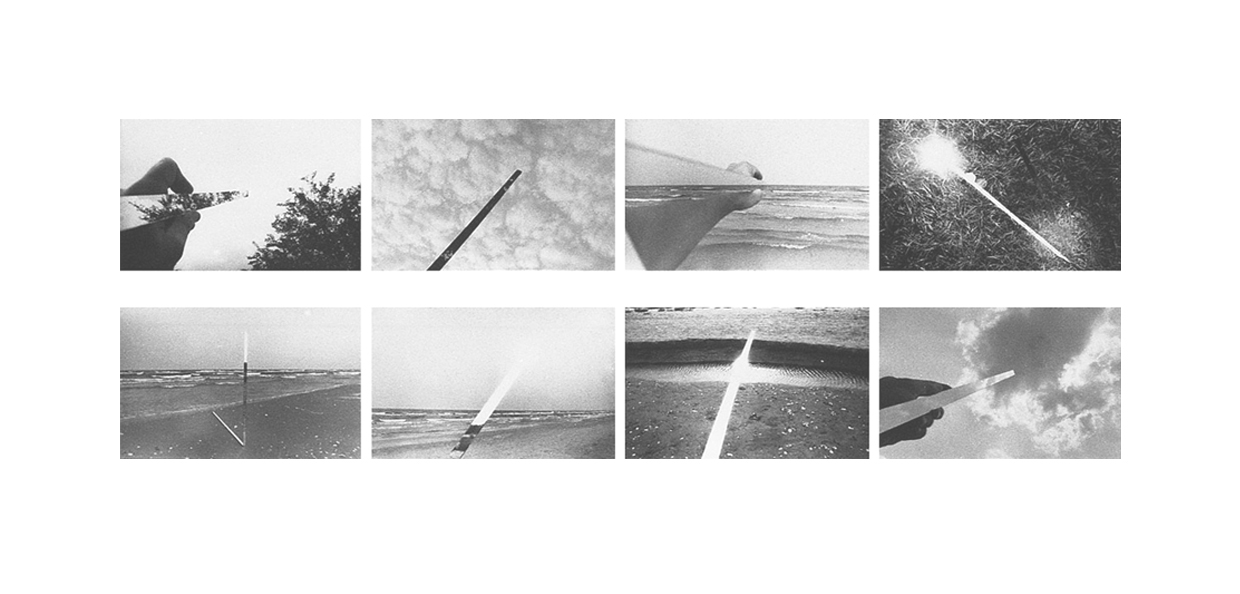
8 vintage black and white gelatin silver prints
Image: 4,2 x 6,5 inch each
Frame: 42 x 82 x 3 cm
The Labyrinth photographs, from the Mirror series, capture an intervention on the seaside, and act as a philosophical reflection around the concept of reality. Like a labyrinth, this notion of reality can take a multitude of paths; there is a global picture of reality in accordance with a supposedly established definition, becoming nevertheless more and more complex and elusive as soon as our common conventions are reconsidered, calling into question its very existence.

vintage black and white gelatin sliver print
Image: 18,5 x 25 cm
Frame: 32,3 x 26,4 x 2,5 cm
The Labyrinth photographs, from the Mirror series, capture an intervention on the seaside, and act as a philosophical reflection around the concept of reality. Like a labyrinth, this notion of reality can take a multitude of paths; there is a global picture of reality in accordance with a supposedly established definition, becoming nevertheless more and more complex and elusive as soon as our common conventions are reconsidered, calling into question its very existence.
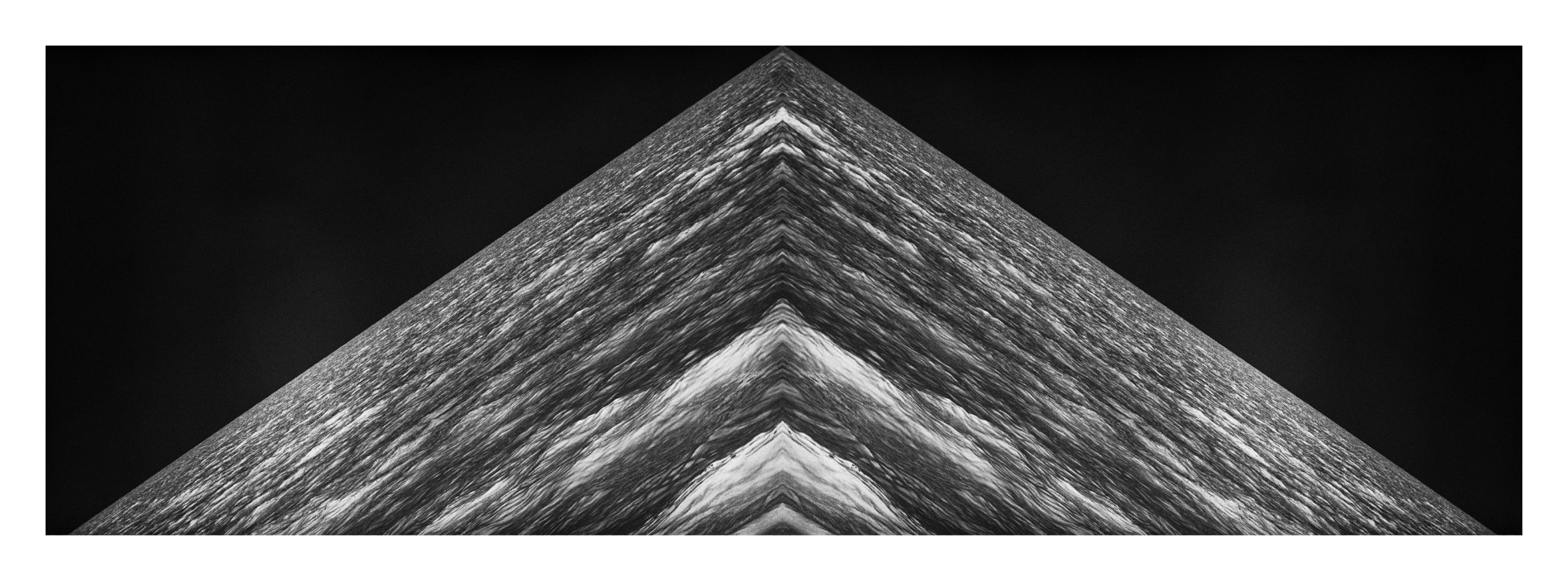
Image: 30 x 90 cm
Paper: 42 x 102 cm
Broken Horizon is part of a research on the perception of reality. The landscape, located in a minimalist universe on the Black Sea, becomes a space of projection of a state of crisis. It represents a feeling of failure, the horizon of all expectations is closed on itself, it breaks, like a "liquid Ararat of isolation."
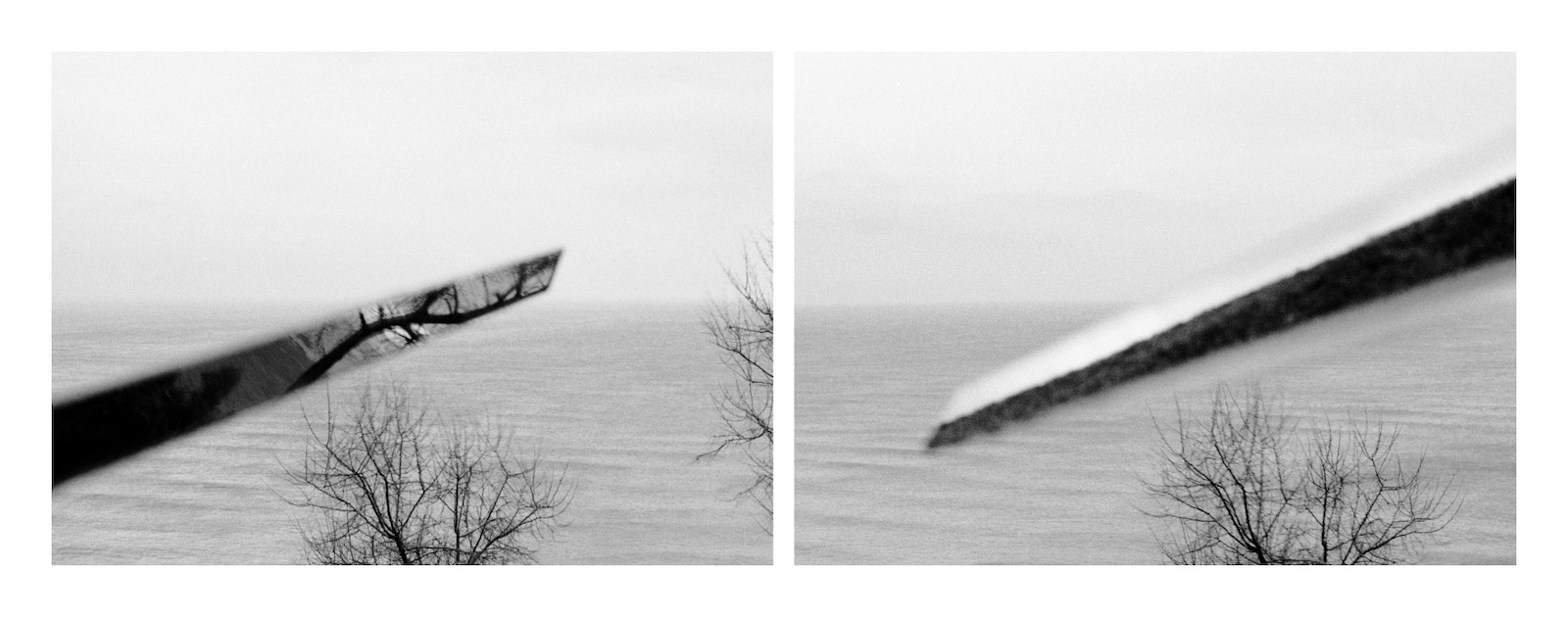
Pigmentary Print
Image: 25 x 71 cm
Paper: 37 x 83 cm
The Mirror series, captures Decebal Scriba's interventions on the seashore, and acts as a philosophical reflection around the concept of reality. Like a labyrinth, the notion of reality can take a multitude of paths. A global image of reality, in accordance with a presumed established definition, nevertheless becomes more complex and elusive as our common conventions are questioned, querying its very existence.

Image: 6 5/8 x 9 inches (each)
The Web is a photographic work produced with spiderweb attached on glass strips, and then copied on photographic paper with an enlarger. Beyond the emphasis on the spectacular work of the arachnid, this artwork outlines a parallel between the web and Romanian police surveillance system at that time. Actually, the surveillance and denunciation network, acted as a spiderweb, constraining any uprising or resistance.

Image: 35,8 x 80 cm
Paper: 40,25 x 90,5 cm
The Veil of Matter is linked to Decebal Scriba's interest in the different states and aspects of matter. Through his poetic eye, it is the ephemeral vision of the impermanence of matter under the light of dawn that appear. The photographs thus form a sort of cartography of the undulatory infinity, like many veils of matter.
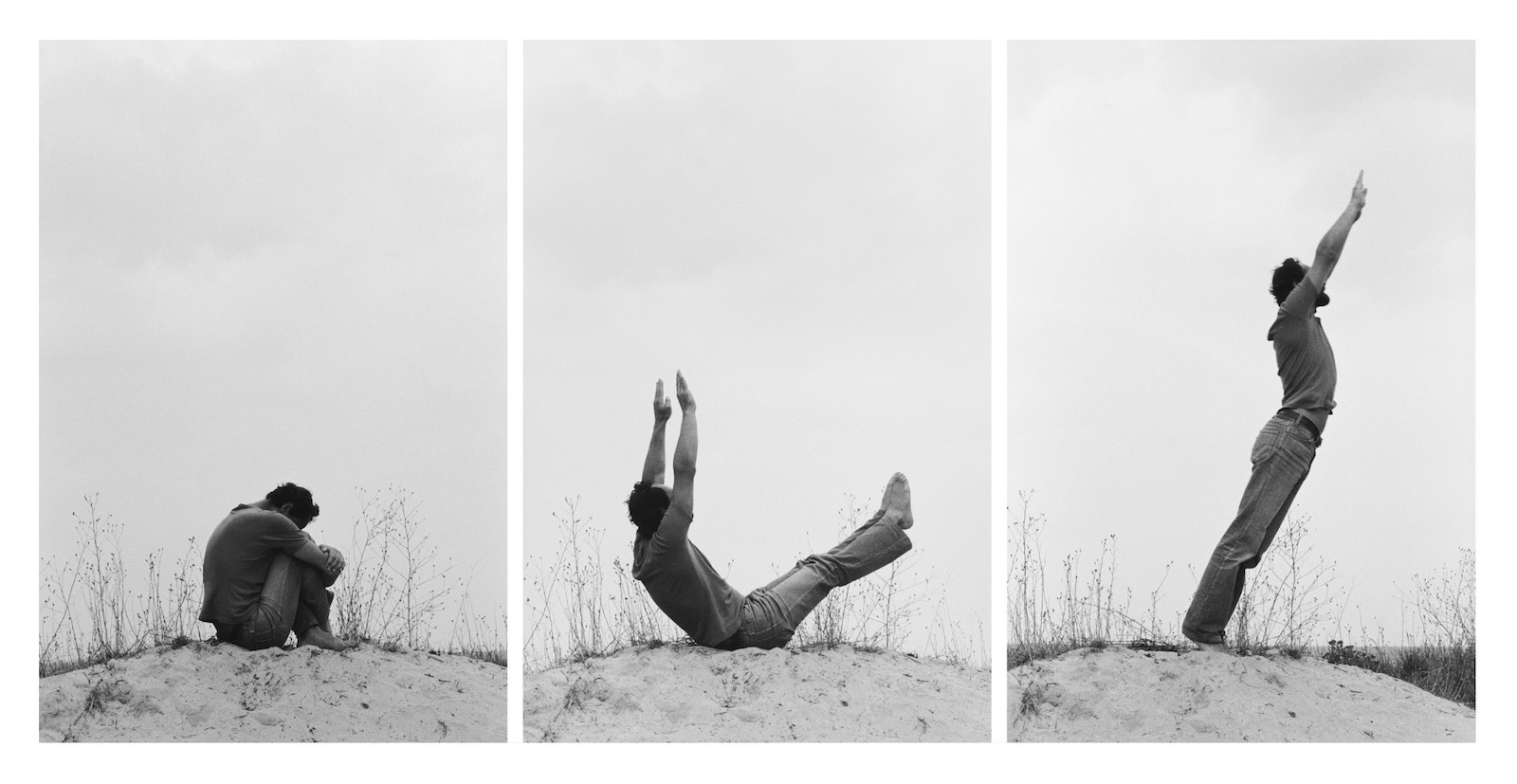
Pigmentary Print
Image: 45 x 92 cm
Paper: 57 x 104 cm
Unfolding belongs to a series of photographs from a performance featuring different static positions in natural spaces. It is part of a reflection on body postures, also visible in The Failure or Body Sign and reflects the actionism of the 80s. Currently named performances, this type of artistic interventions were then called "actions", term with an undeniable stronger political connotation.
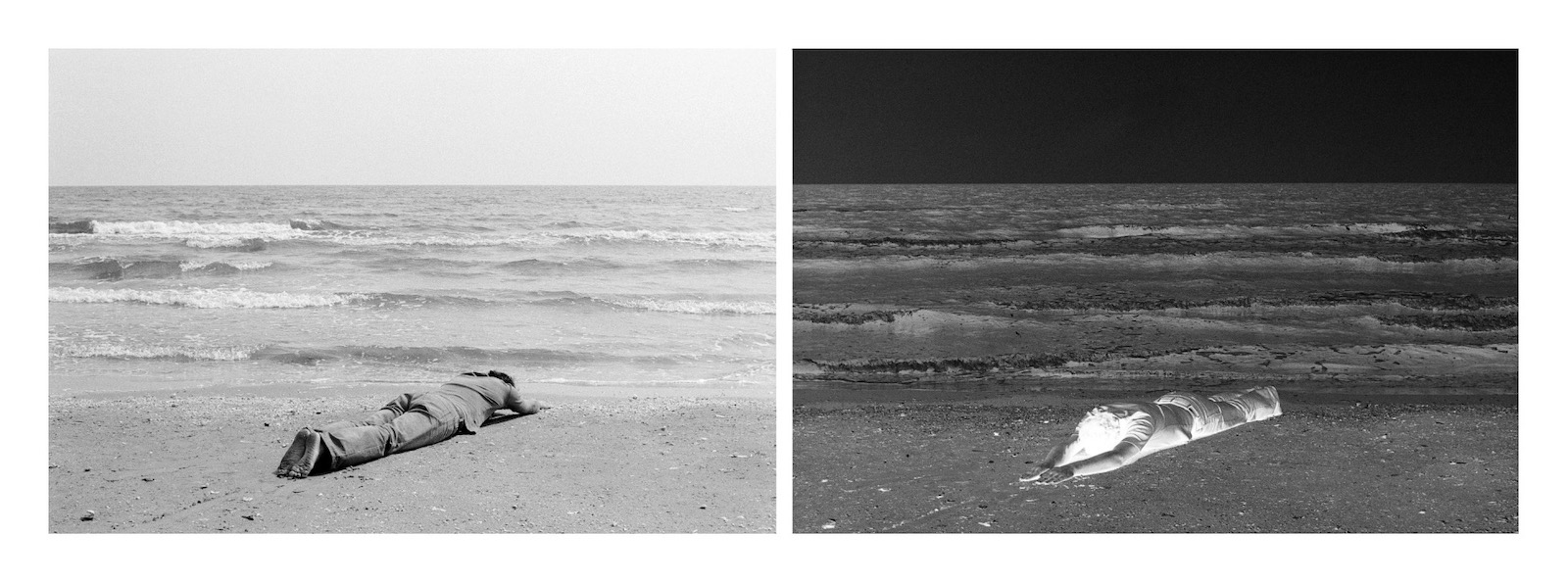
Pigmentary Print
Image: 30 x 91 cm
Paper: 42 x 103 cm
The Failure belongs to a series of photographs from a performance featuring different static positions in natural spaces. It is part of a reflection on body postures, also visible in Unfolding or Body Sign and reflects the actionism of the 80s. Currently named performances, this type of artistic interventions were then called "actions", term with an undeniable stronger political connotation.
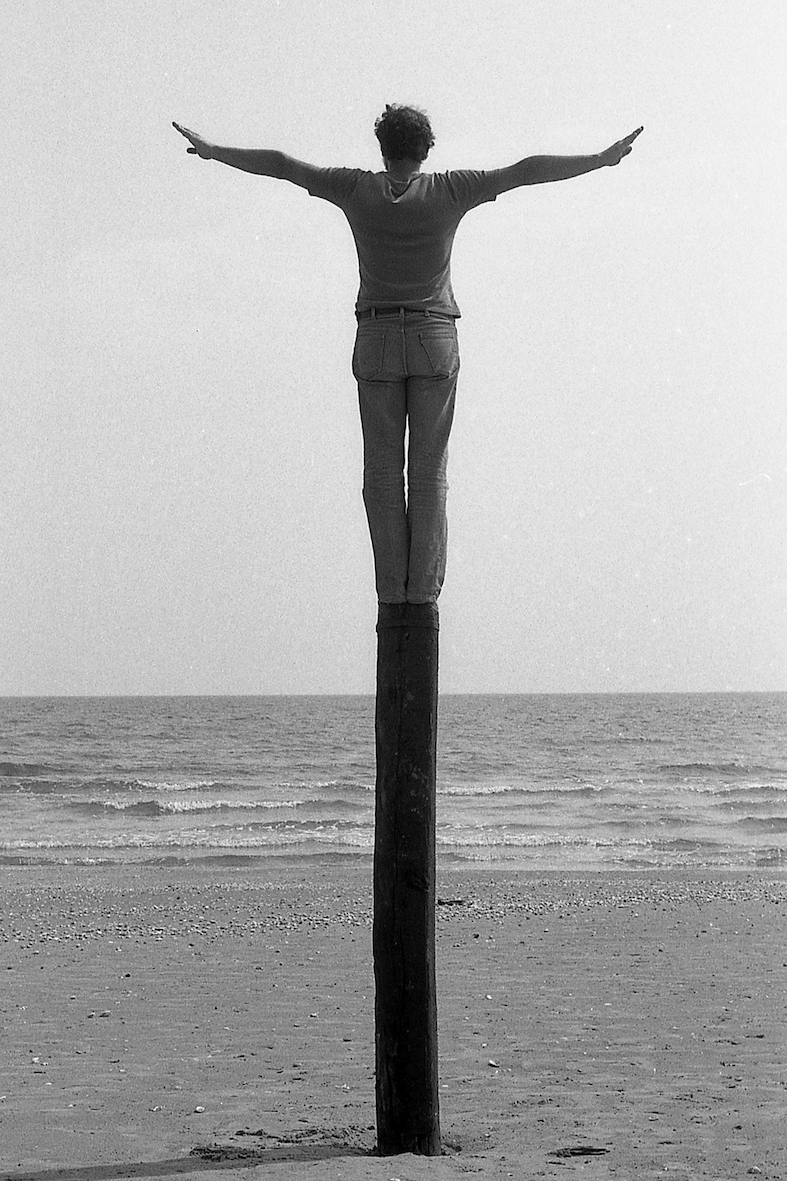
Black and white gelatin silver print
Image: 17,7 x 11, 8 inch
Body Sign # 1 belongs to a series of photographs from a performance featuring different static positions. It is part of a reflection on body postures, also visible in The Gift or Body Sign #2 and reflects the actionism of the 80s. Currently named performances, this type of artistic interventions were then called "actions", term with an undeniable stronger political connotation.
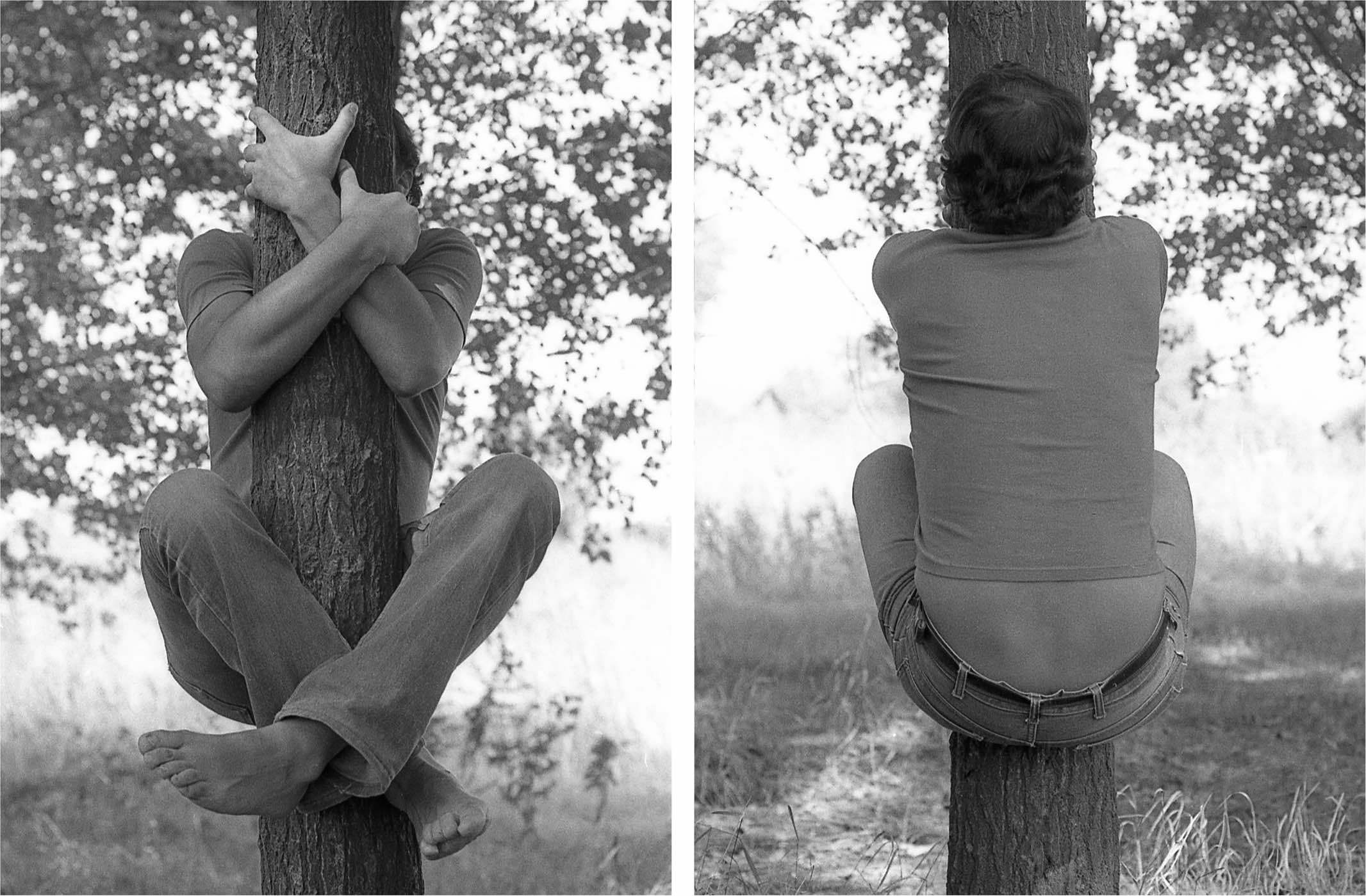
archival pigment print on Hahnemühle Photo Rag Baryta
Image: 60 x 82 cm
Paper: 62,5 x 90 cm
Frame: 62,5 x 90 x 3 cm
Body Sign #2 is part of a photography's series from a performance, staging different static positions. It has to be seen in a reflection about body postures, also presented in The gift or Body sign #1, and exhibits the actionism in the 1980s. Nowadays named performances, this type of artwork was called actions, which has undeniably a more powerful political connotation.
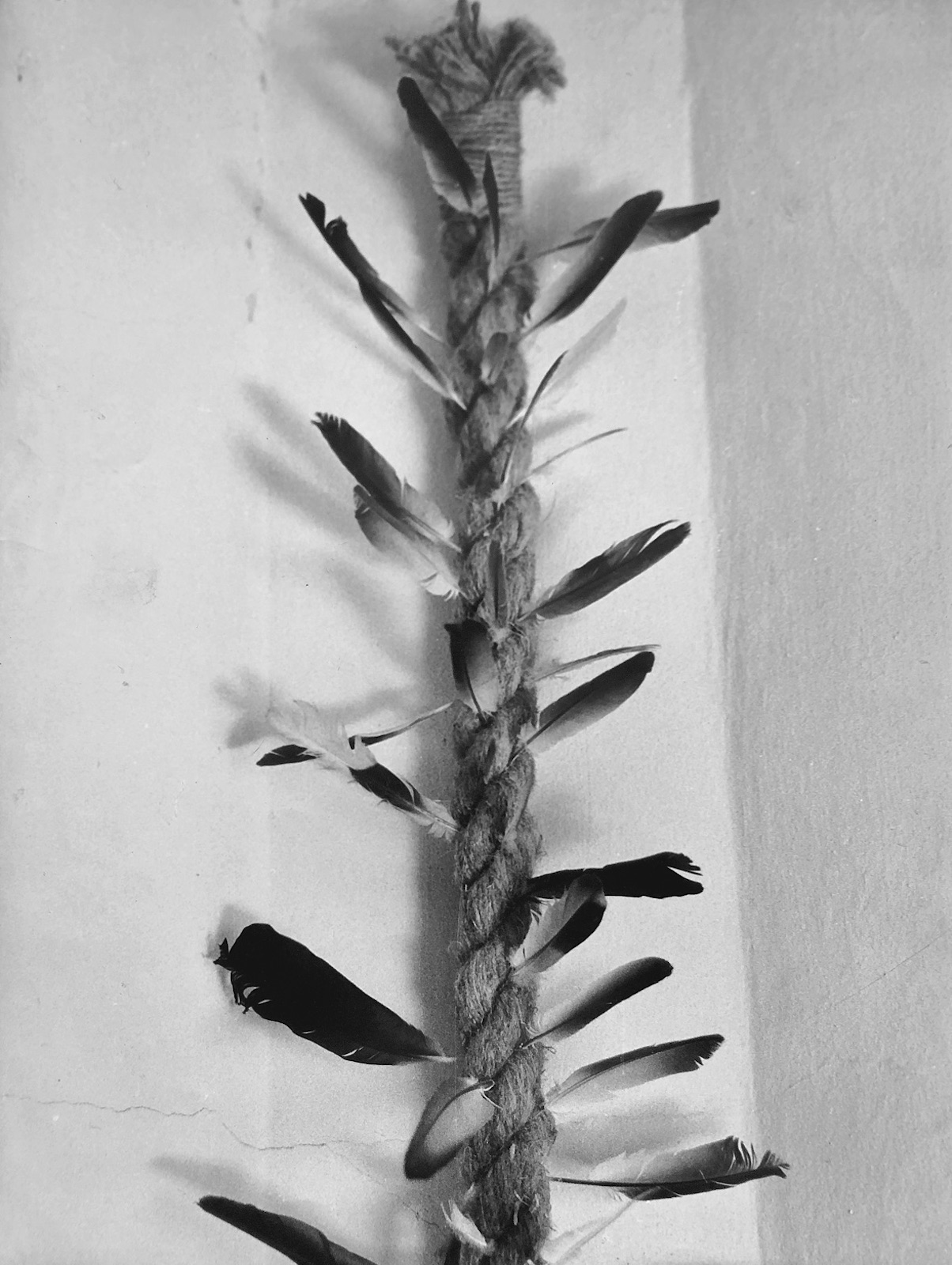
Image: 39 x 29,5 cm
This photograph presents an installation, inspired by an ancient Romanian legend, and shows the artist's interest to explore the symbolic of objects. In line with the ball, often used by Decebal Scriba, the rope leads to a philosophical et existential reflection, suggesting a form of elevation.

Image: 10 x 10 cm
Signed, titled, dated at the back
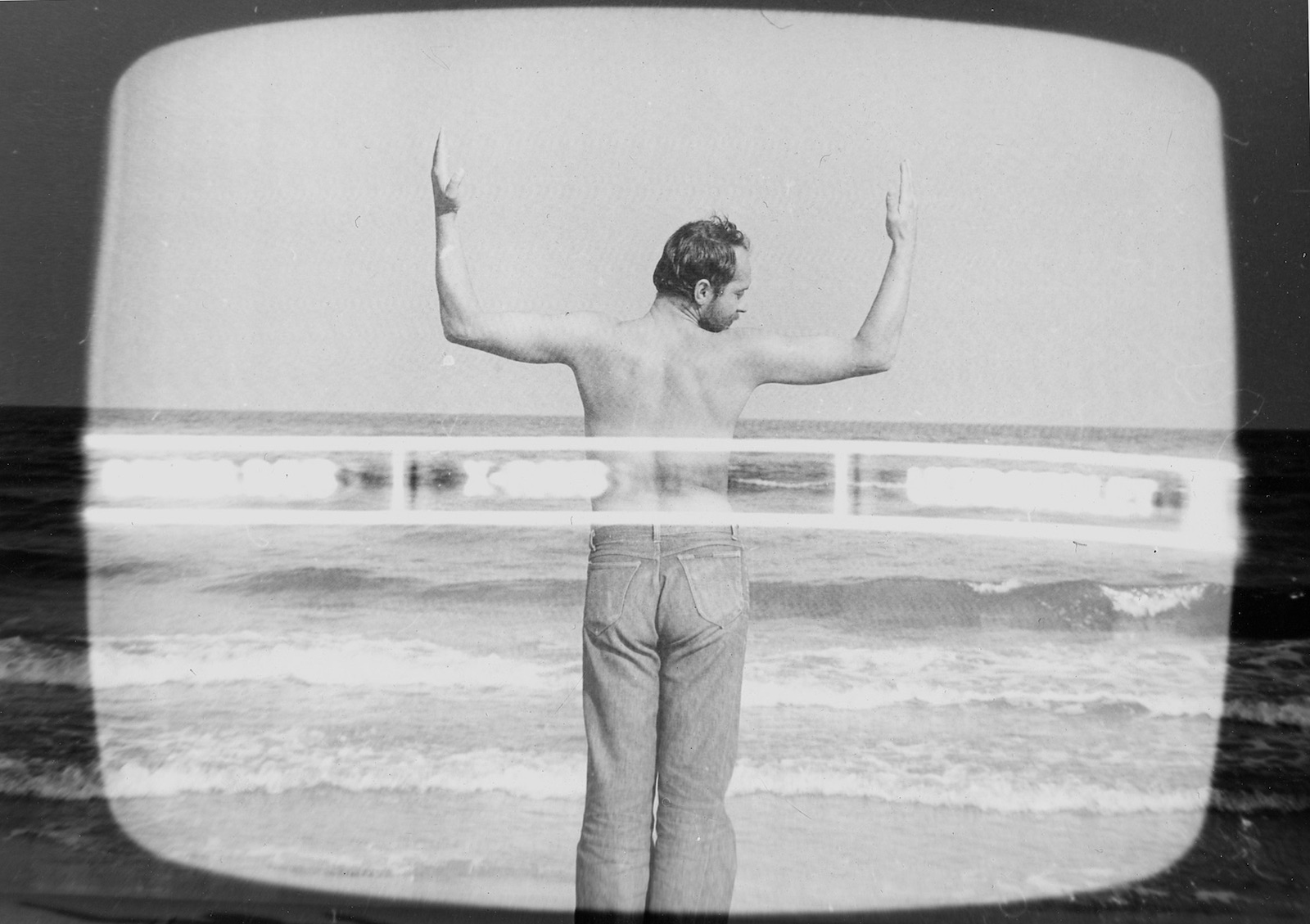
Image: 4,7 x 6,7 inch
Frame: 11,2 x 13,5 x 1 inch
Performance project is an attempt to make a video, composed of a gestures’ series, pursuing a reflection about body language, also visible in The gift or Body sign series.
This project never ended due to the shortage of video equipment within a context of political austerity. Nevertheless, it shows the multiplicity of devices surrounding Decebal Scriba’s performance.

16,5 x 23 cm (each)
Curtain #2 (performance project) is a photograph of a performance, in which the artist intervened retrospectively. It goes along with a performance and intervention series realized on the seaside, exploring gestures symbolic and the connection with reality. In this photograph, painted curtains come on the top of the represented action, creating the illusion, both symbolical and political, of opening or closing on the horizon.
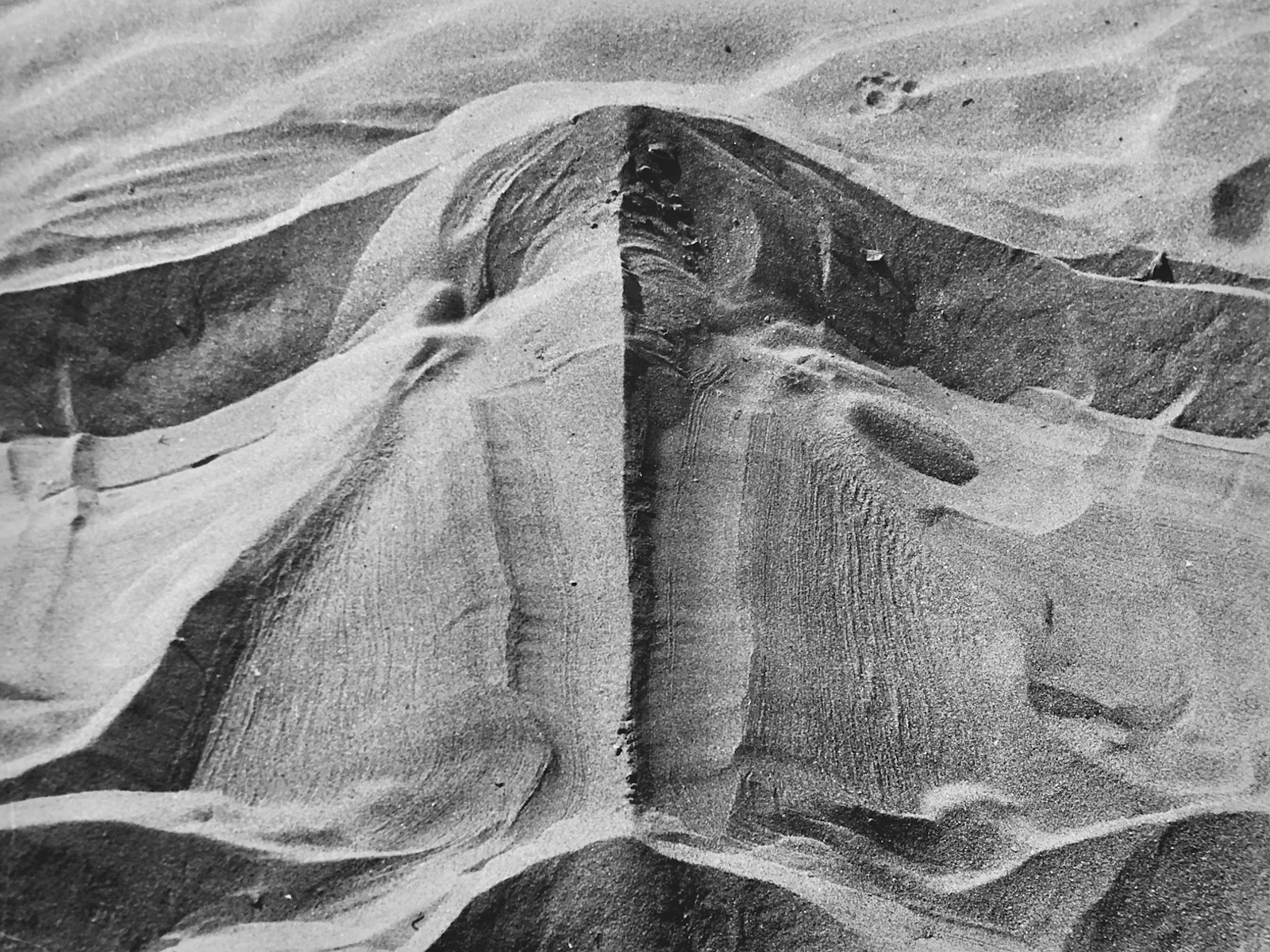
Image: 29,5 x 39 cm
The photographs series Sculptures apture the marks of a performance executed by Decebal Scriba on the sand. Results of the application of a minimalist formula, the forms obtained by the artist's movements produce a sculpture, expressing a metaphysical reflection on the relationship between nature and Art.
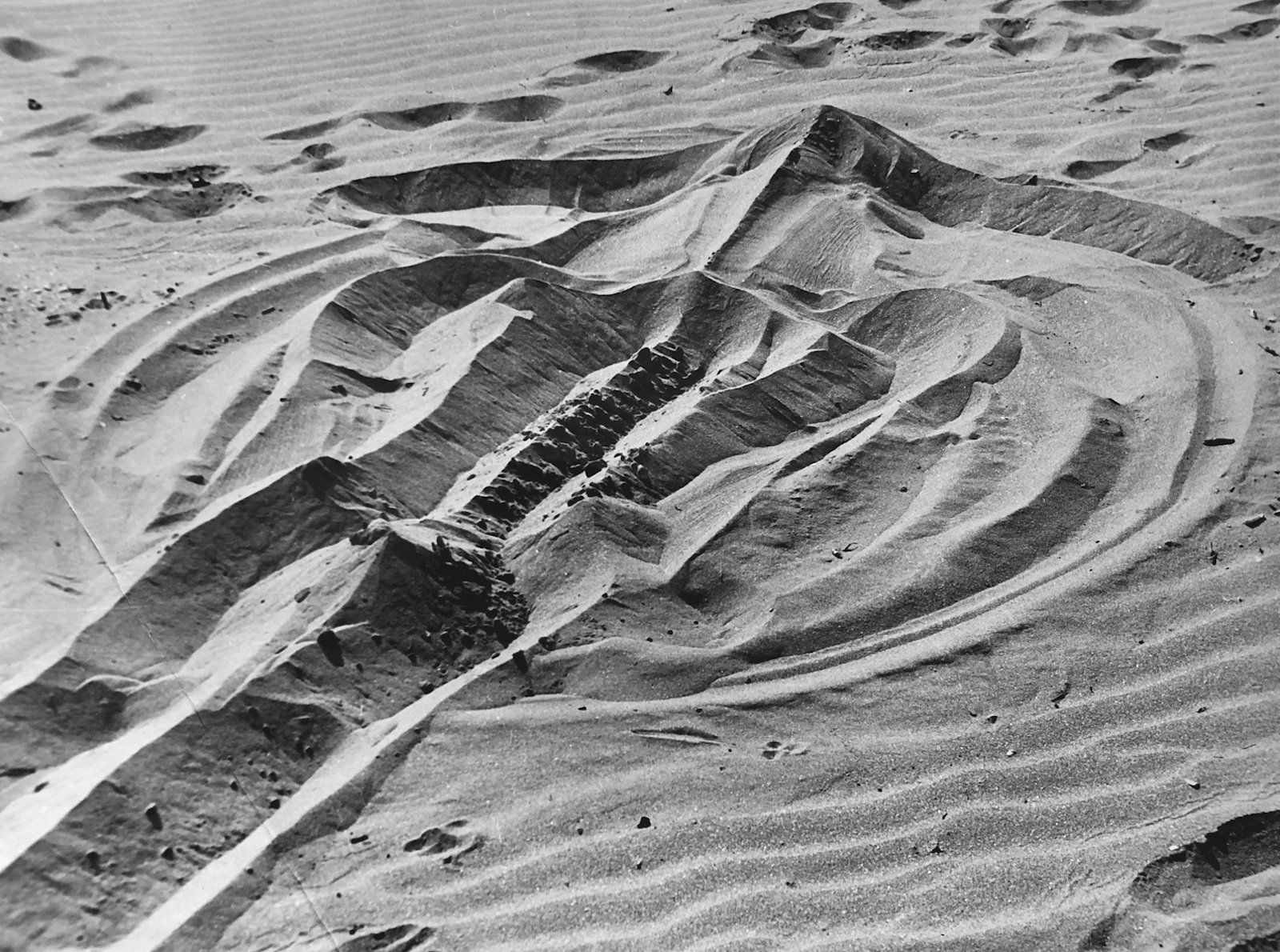
Image: 29,5 x 39 cm
The photographs series Sculptures capture the marks of a performance executed by Decebal Scriba on the sand. Results of the application of a minimalist formula, the forms obtained by the artist's movements produce a sculpture, expressing a metaphysical reflection on the relationship between nature and Art.
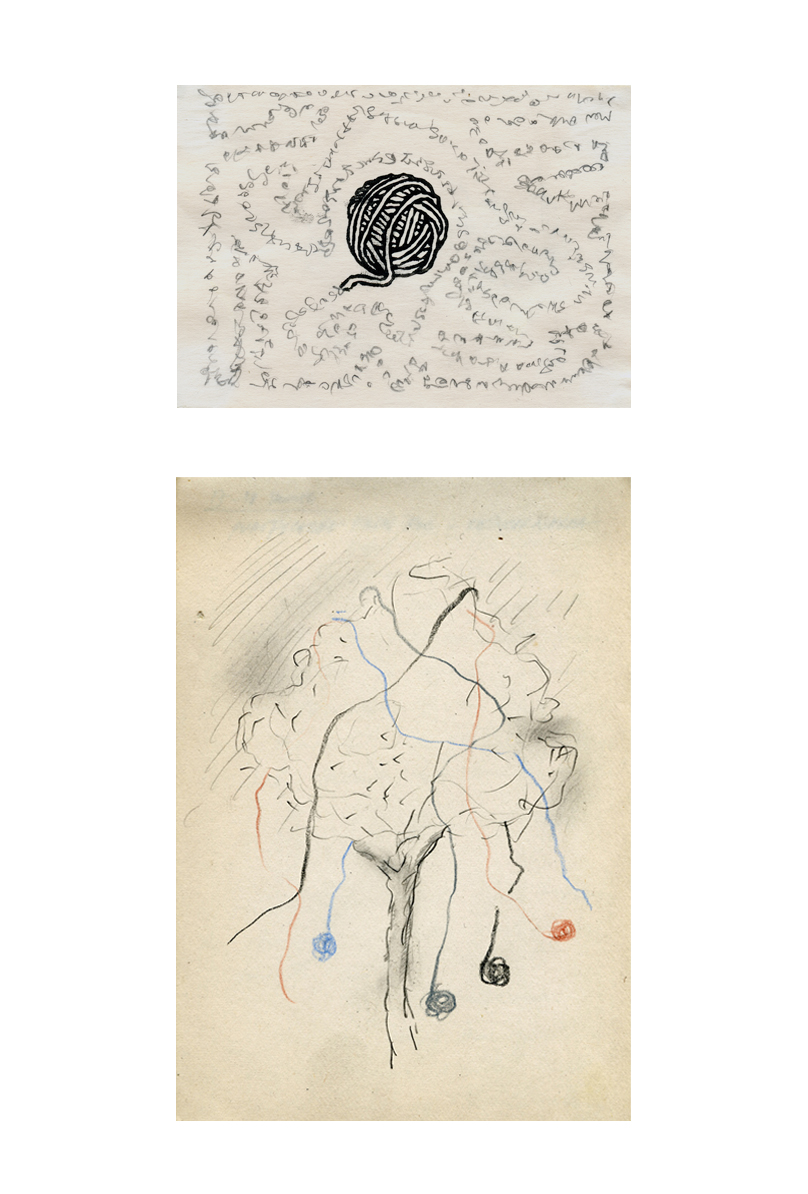
The clew is a recurrent pattern in Decebal Scriba's work. It takes on a strong symbolic and philosophical dimension, the rope referring to the idea of an initiatory journey, or even the course of existence. Composed of entanglements of yarn sometimes ordered, sometimes chaotic, it introduces a reflection on existential dilemmas.
This symbol is also used in drawings during state exhibitions and, under the guise of sobriety and innocence, allows the artist to escape the risk of censorship.
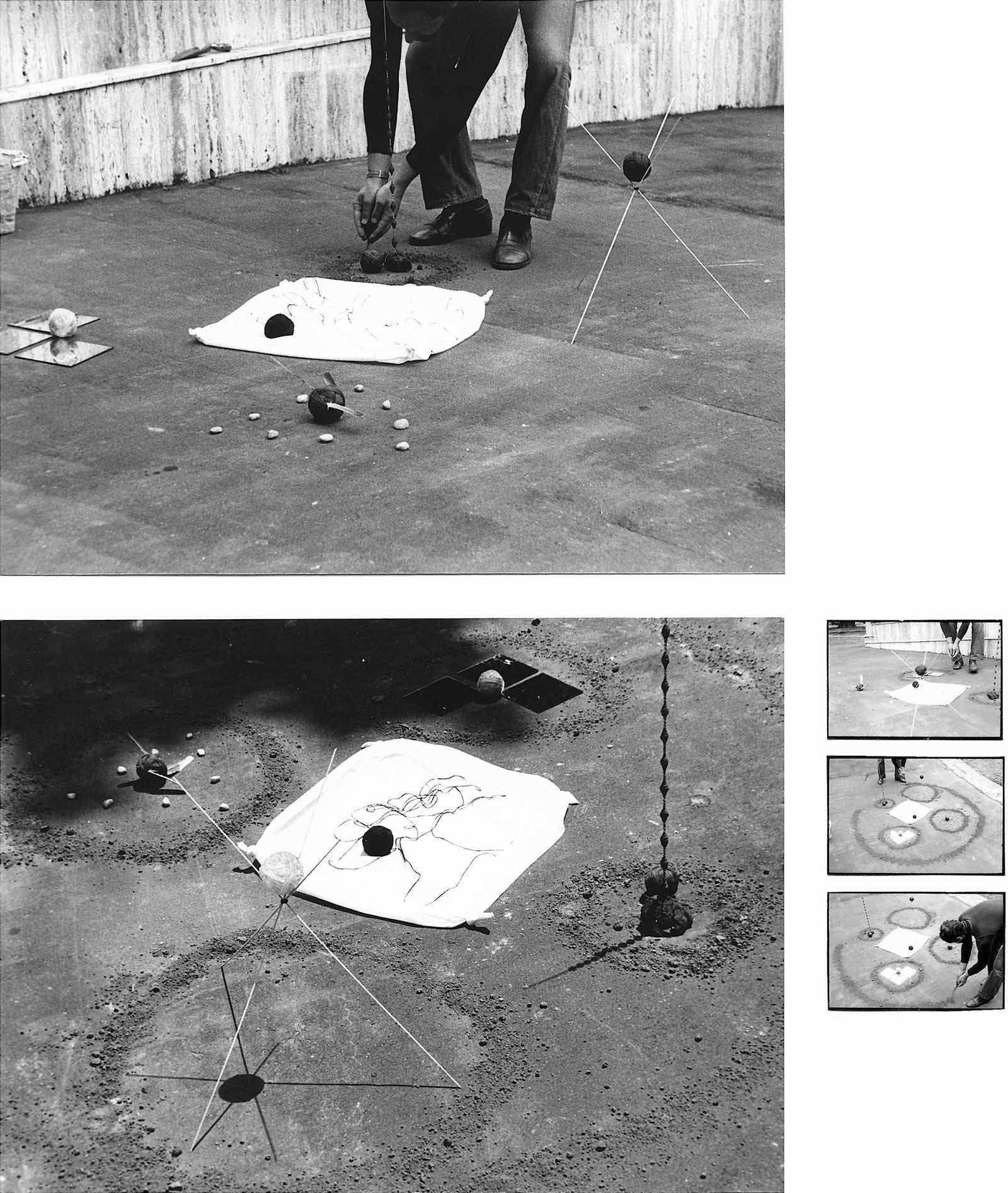
Image: 4 3/4 x 6 1/4 inches (each; left), 1 x 1 1/2 inches (each; right)
These photographs show a performance where a temporary installation took place in a museum’s court, gathering materials and symbolic objects from traditionnal culture - ball, thread, mirror, feather, column – and presenting coded gestures, referring to commemoration ritual. This artwork demonstrates a very audacious project considering the socio-political context at that time in the place it was produced.
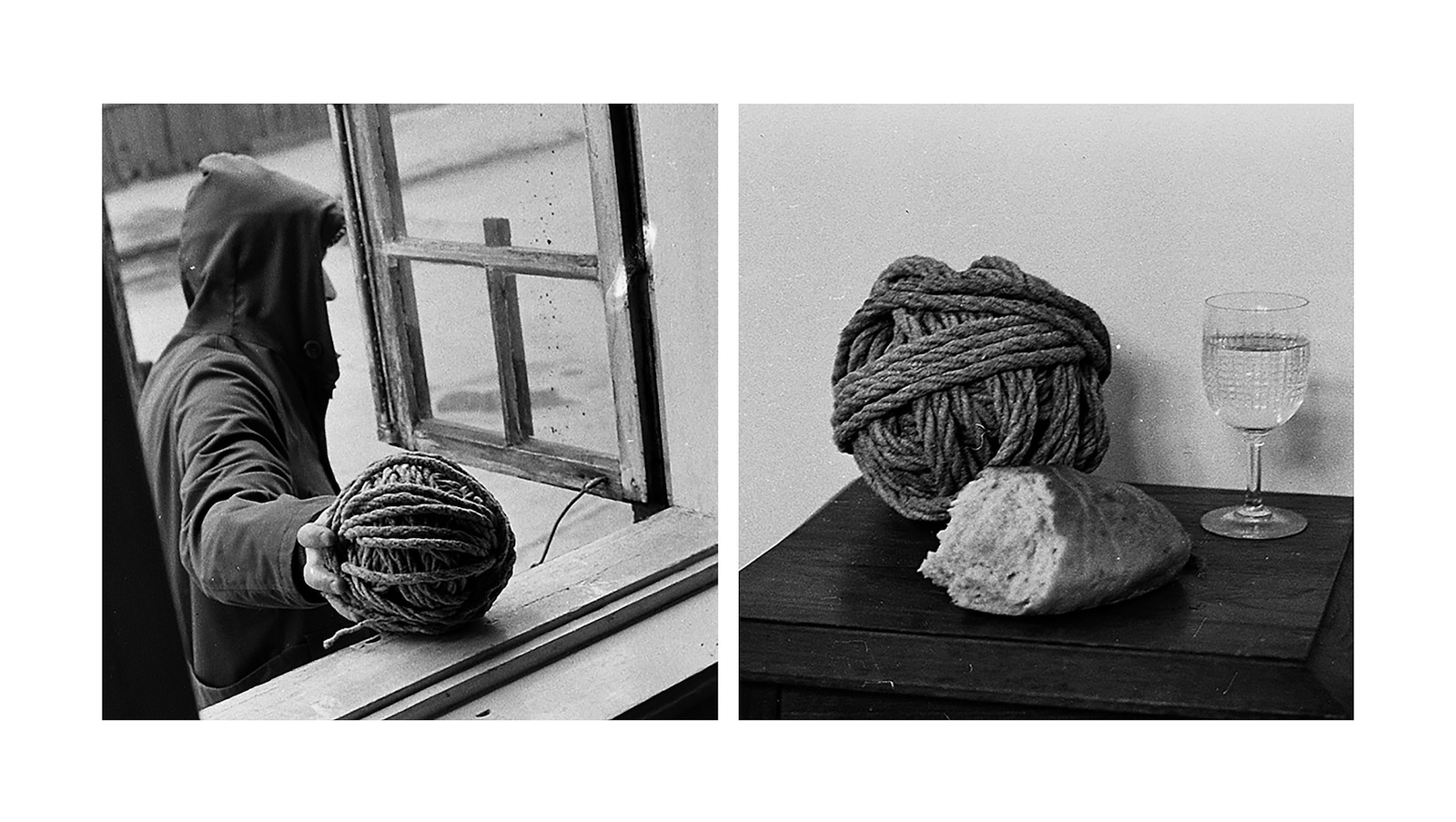
Image: 30 x 30 cm (each)
The clew is a recurrent pattern in Decebal Scriba's work. It takes on a strong symbolic and philosophical dimension, the rope referring to the idea of an initiatory journey, or even the course of existence. Composed of entanglements of yarn sometimes ordered, sometimes chaotic, it introduces a reflection on existential dilemmas.
This symbol is also used in drawings during state exhibitions and, under the guise of sobriety and innocence, allows the artist to escape the risk of censorship.
Exhibitions:
- Passages, Galerie Anne-Sarah Bénichou, Paris, France, 2019
- Memory Clouds, curated by Ami Barak, Galerie Anca Poterasu, Bucharest, Romania, 2018
- Decebal Scriba & Serge Spitzer, 40 years after, Contemporary Art biennial Art Encounters, curated by Ami Barak, Timisoara, Romania, 2017
Bibliography:
- Decebal Scriba, 70s - 80s Works, under the supervision of Olivia Nitis, Verlag Kettler éditions, 2017, p.76 and p.101
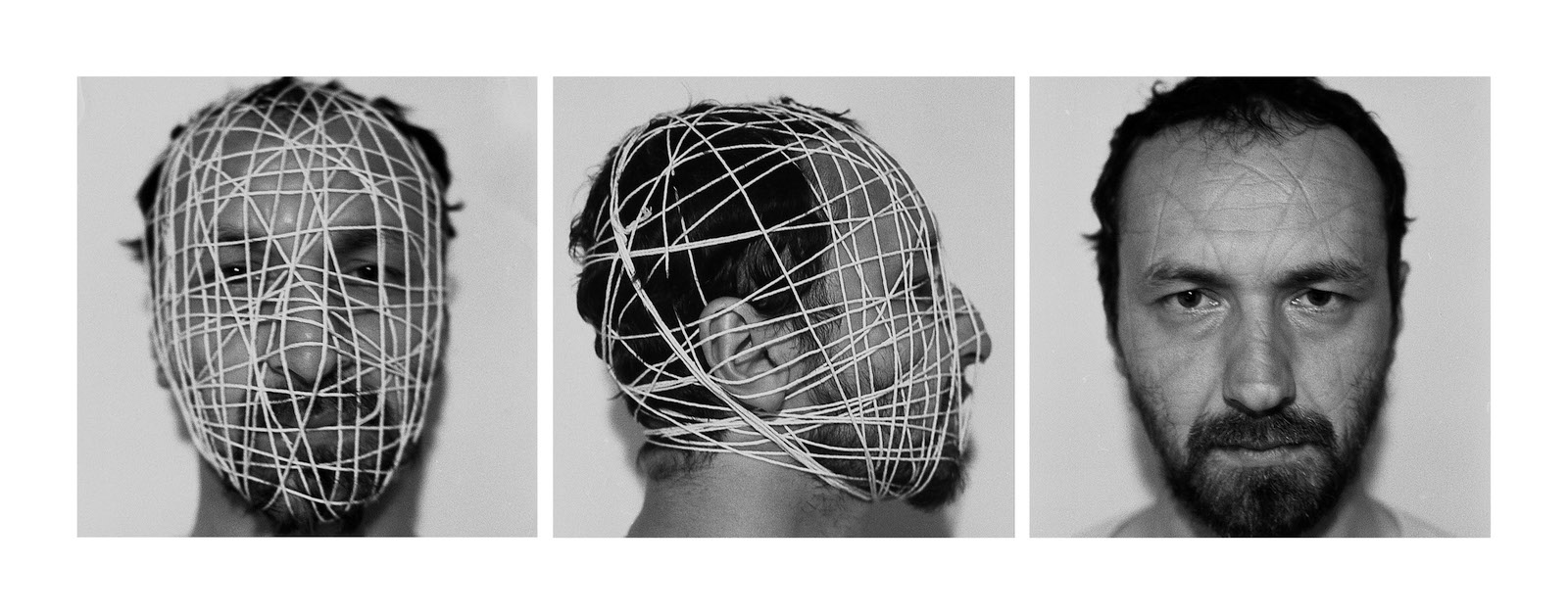
Black and white gelatin silver prints - Triptych
Image: 30 x 30 cm (each)
Frame: 42 x 104 x 3 cm
The "Masks" series is marked by a strong political dimension, staging symbolically the constraints generated against Romanian intellectuals in times of dictatorship, especially artists.
Mask # 2 suggests a reflection about the final image, here by the marks left on the skin after the removal of a tightly wrapped string. This political work, though without being a program of dissidence, evokes the muzzling, the oppression undergone during a period of censorship and extreme surveillance.

Image: 4 x 4 inches (each)
The "Masks" series is marked by a strong political dimension, staging symbolically the constraints generated against Romanian intellectuals in times of dictatorship, especially artists.
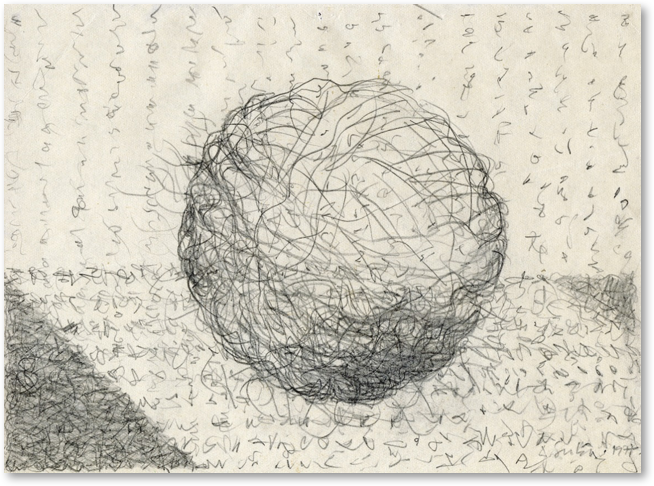
6 x 7,6 inch
The clew is a recurrent pattern in Decebal Scriba's work. It takes on a strong symbolic and philosophical dimension, the rope referring to the idea of an initiatory journey, or even the course of existence. Composed of entanglements of yarn sometimes ordered, sometimes chaotic, it introduces a reflection on existential dilemmas.
This symbol is also used in drawings during state exhibitions and, under the guise of sobriety and innocence, allows the artist to escape the risk of censorship.

Vintage gelatin silver prints (photo stripes)
Image: 1 3/8 x 1 1/2 inches (each)
Frame: 9,6 x 10,8 x 1 inch
The "Masks" series is marked by a strong political dimension, staging symbolically the constraints generated against Romanian intellectuals in times of dictatorship, especially artists.
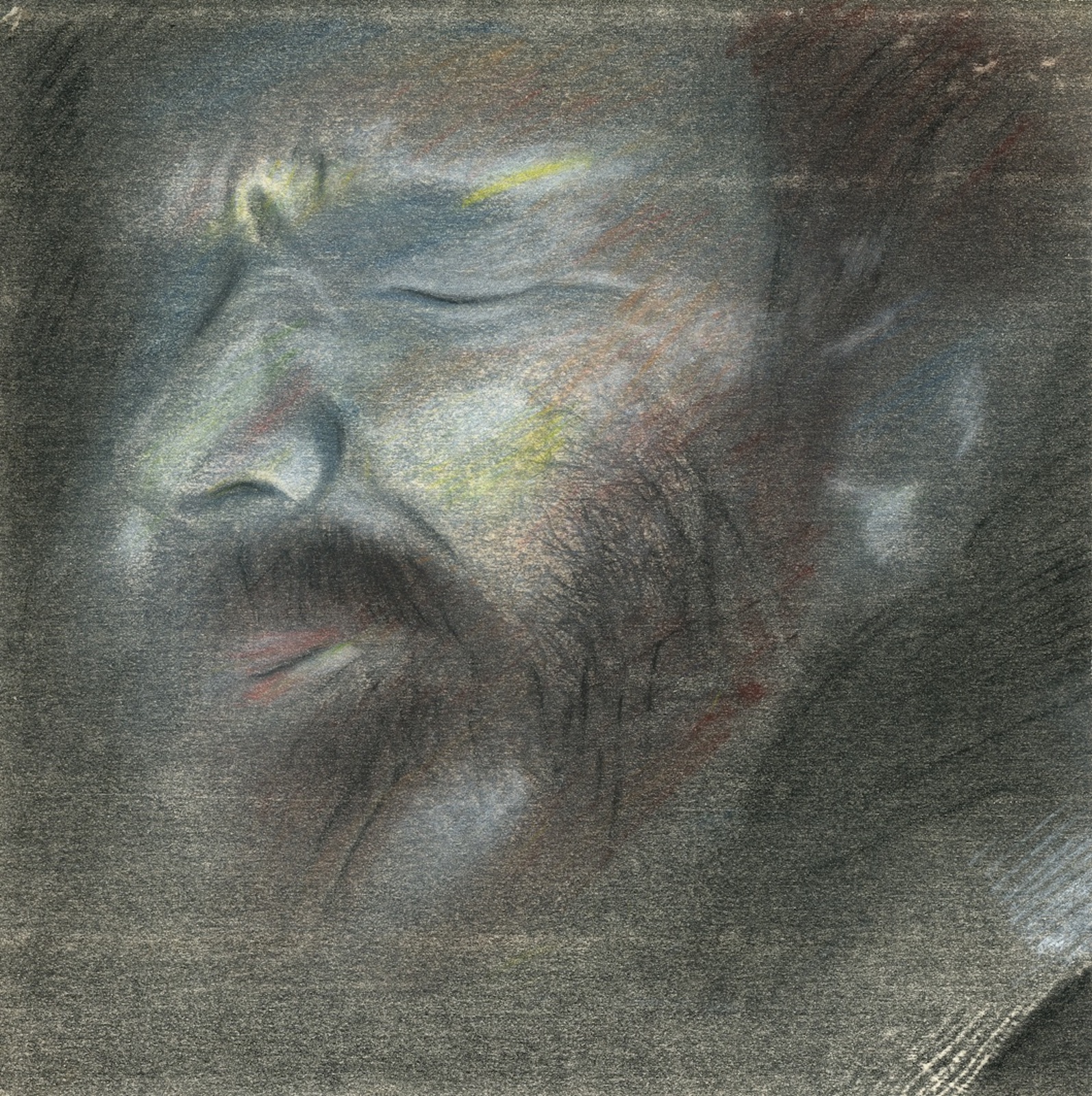
8,3 x 8,3 inch
Selfportrait artworks explore the potential seriality of the auto portrait genre. The artist has used a printer to multiply his face placed directly on the apparatus. He retrospectively intervened on the image with coloured pencil.

Image: 10,5 x 16,5 cm
Frame: 28,5 x 34,5 x 2,5 cm
Omen shows an imprisoned hand by ropes, suggesting a lack of freedom of movement, equally physical and psychological. Fingers' forced immobility alludes to the artist's status under dictatorial regime.
The clew, recurring pattern in Decebal Scriba's work, reflects the idea of an initiatory journey, or even the course of existence, becoming in this photograph a premonitory sign of absurdity that occurs in the reality.

Image: 1 3/4 x 3 inches (each)
Frame: 15 x 9 x 1 inch
Relational Attitudes is a pioneer project in Decebal Scriba’s work, announcing the premises of a conceptual dimension which systematically appears in his artworks. By staging attitudes and meaningful gestures, the artist appeals either to an acceptation of aspects of reality, or a rejection just before it occurs a conquest and a relief relating to these aspects.
A photocopy of this work is archived in the Institut für Moderne Kunst in Nürnberg, belonging to a correspondence between the artist and one of his German counterpart, being part of “mail art”.

Image: 65 x 162 cm
Frame: 69 x 166,5 x 3 cm
With Signs (body work), Decebal Scriba reinvests the language of postures already undertaken in other series. Here, it acquires a ritual dimension, while echoing the socio-cultural context of Romania in the 1970s. The gestures, in a sort of reinvented sign language, refer to attitudes adopted during the Romanian communist regime: passivity, consolation, acceptance... Accordingly, the column hides the body to focus attention on the hands, vehicles of emotion and silent speech when expression was constrained.

Image: 30 x 20 cm chaque
The Gift is a performance executed in 1973 and 1974 in the streets of Bucharest in which the artist, while evolving in the city holding an imaginary object, attempts to enter into communication with a potential audience. It is part of a reflection already initiated where the symbolism of the posture is explored, becoming ritual, essential or universal. Due to an oppressive policy and a climate of constant denunciations, the expected contact is missed and the experience punctuated by suspicious looks. It is immortalized by photographs, of which this last version of presentation enables to restore the atmosphere of this period, acting by this documentary dimension like a real testimony of the time.

Image: 30 x 45 cm
Paper: 30 x 45 cm
Wrapped sculpture documents a work by Decebal Scriba on body expression and the non-existence of existence. The sheet conceal while emphasizing the body, in order to protect it or fetishize it.
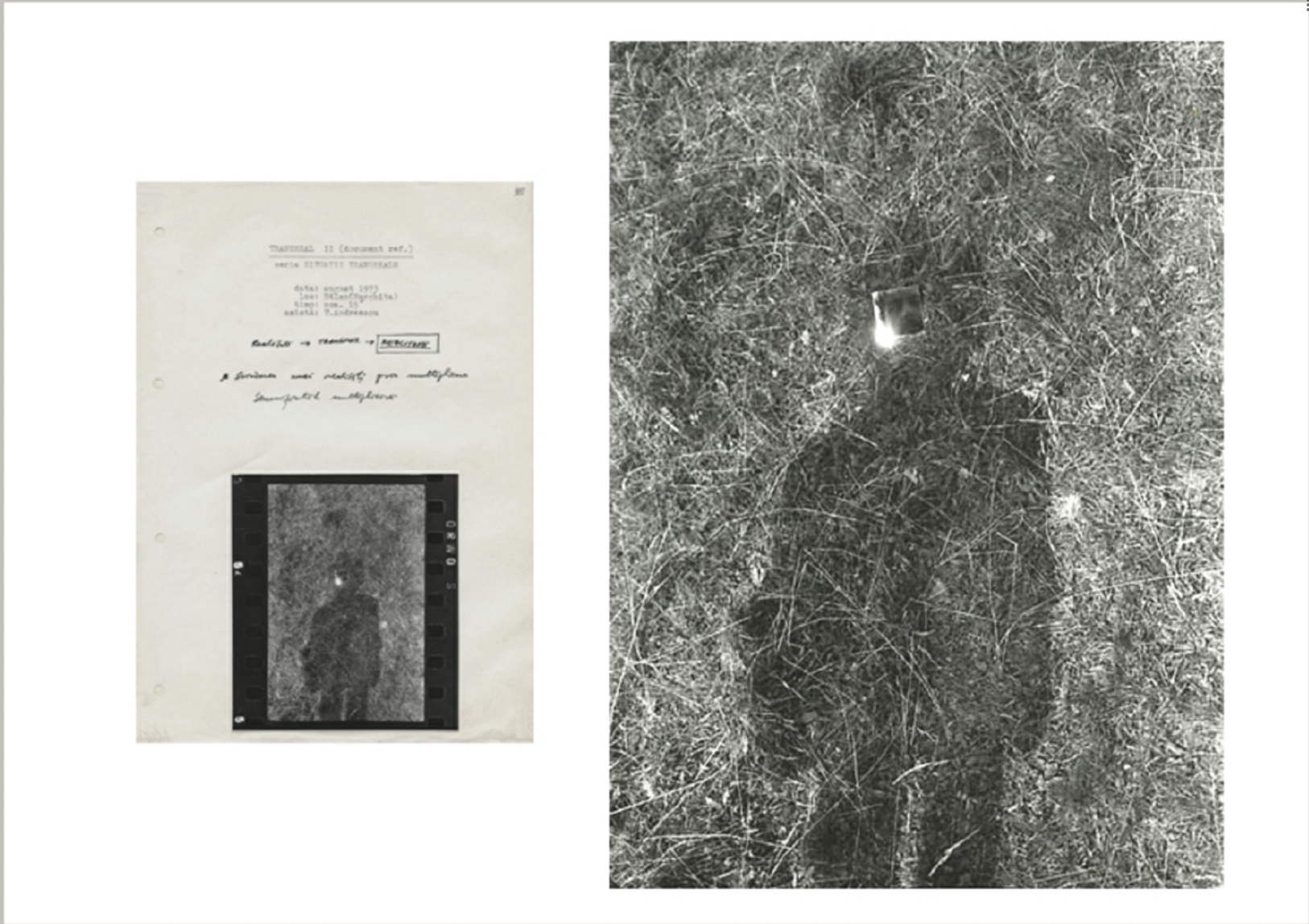
Image: 19,6 x 27,5 inch
Frame: 22,2 x 30 inch (framed)
Exhibition:
- La Brique, the Brick, Caramida, La Kunsthalle, Contemporary Art Center, Mulhouse, France, 2019

Image: 19,7 x 27,5 inch
© Yap Studio
Action II presents in a conceptual and performative work, an absurd situation where a man is climbing a ladder placed on the floor. This situation, to all appearances humorous is intended to reveal the absurdity of a system constraining artists to immobility.
Nowadays named performances, this type of artwork was called actions, which has undeniably a more powerful political connotation.
Exhibition:
- Ex-east: histoires passées et récentes des avant-gardes roumaines, Espace Niemeyer, Paris, France, 2019
Bibliography:
- Decebal Scriba, 70s - 80s Works, under the supervision of Olivia Nitis, Verlag Kettler edition, p. 135
- Art Encounters 2017, exhibition catalogue Life a User's Manual, biennale de Timisoara, p. 164

6 x 4,5 inch
Exhibition:
- La Brique, the Brick, Caramida, La Kunsthalle, Contemporary Art Center, Mulhouse, France, 2019

Image: 30 x 90 cm
Frame: 42 x 103,4 x 3,5 cm
Untitled (Void study) is the photographic capture of a rectangular breakthrough in grass. The image, which become obsessional for the artist, found its meaning when it was turned to a negative. It then evolves into a questioning around the notion of emptiness and fullness, existance and nonexistent, life and death. Through the investment of the philosophical field, the artist invites us to interrogate our definitions in order to highlight their complexity.
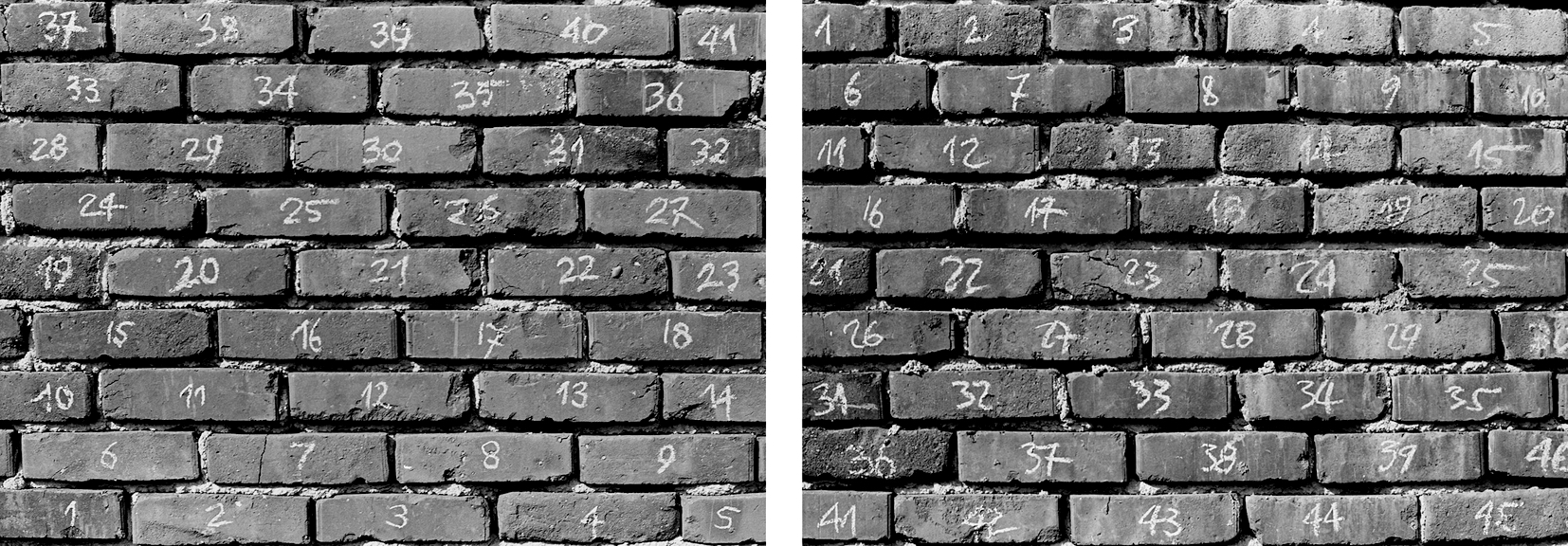
Image: 30 x 45 cm (each)
The Wall, by figuring numbers on a wall in a ascending and descending order, evokes both construction and deconstruction. The work embodies the idea that no wall can withstand the impact of time or human intervention, while referring to a period of demolition in favor of the architectural and political construction of the Romanian totalitarian regime.
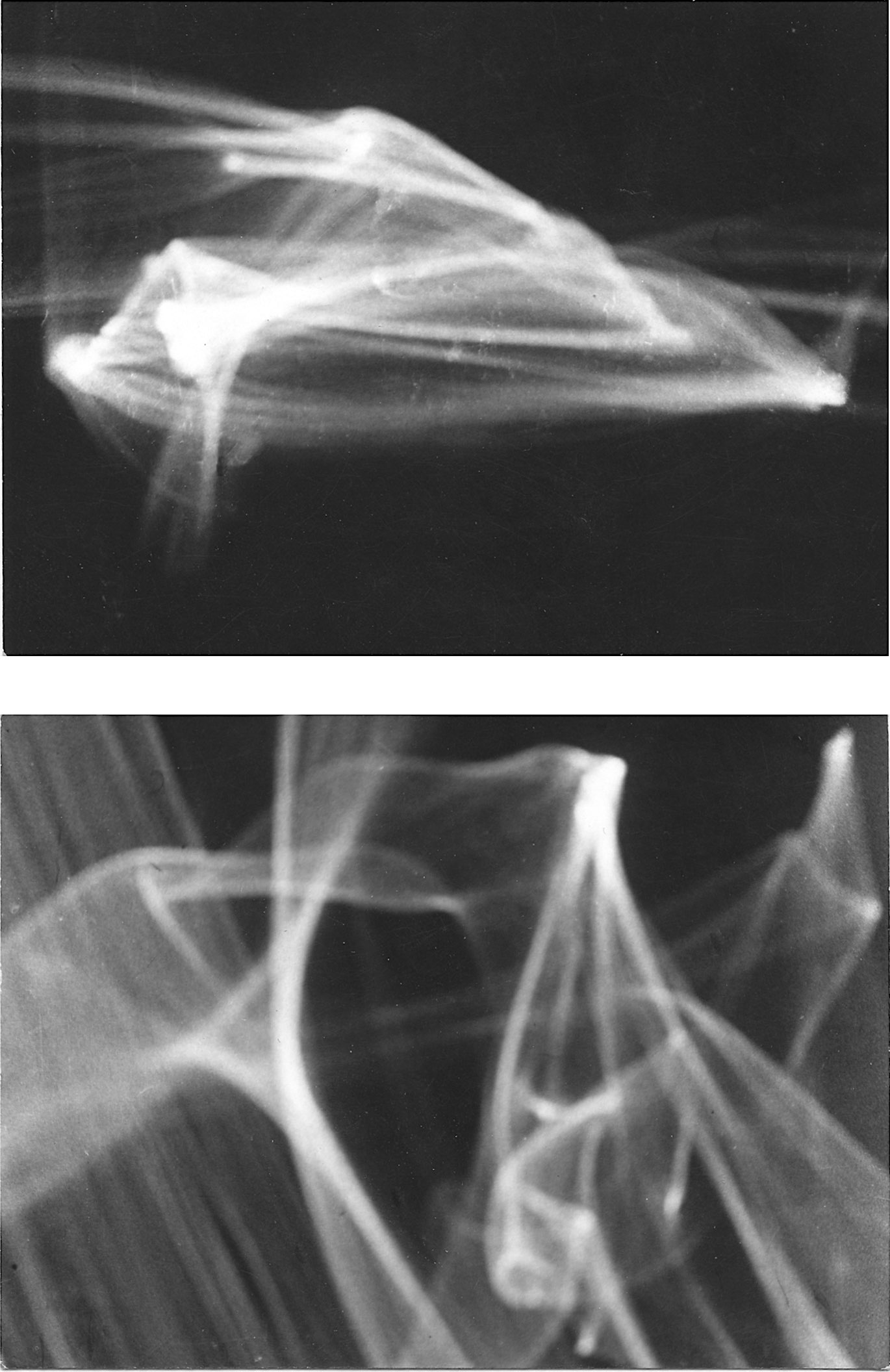
Image: 8,5 x 11,5 cm (each)
Frame: 31 x 24 cm
Lucidograms proposes a study of light, already presented in Liquid Matrix, Mirror series, Axis or Labyrinth. The artist used metallized plastic foil, and played with its reflection on the wall to create and capture patterns. The richness of the repertory of forms is obtained through the distortion of the shelf, reflecting its distance from the wall, and recalling complex mathematical models to some extent.
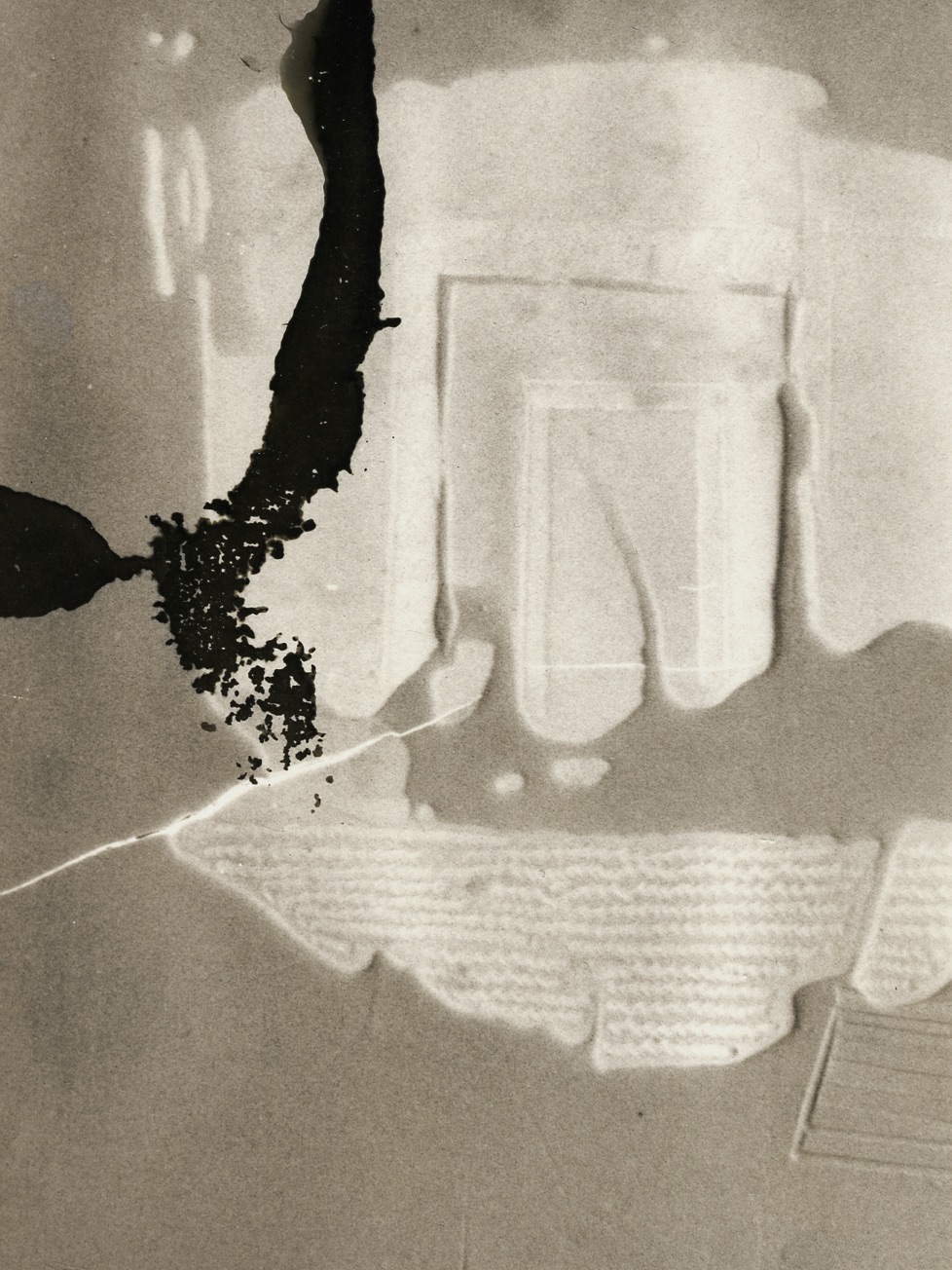
Image: 11,5 x 8,5 cm
The photographs series Accident are the result of accidentally triggered chemical reactions in a photographic laboratory. Beyond the defective nature of the production, the artwork endorses an artistic interest and falls within self-generated and accidental art.

8,2 x 11,6 inch
Actions is echoing works around the conceptualism of the 60 - 70's, in which the artists exhibited "statements", in other words actions to be executed. By the integration of infinitive verbs, Decebal Scriba makes a reference to these "statements" and suggests, by the exploitation of the letter A only, the infinite character of the creative process constructed between utterances, combinations and inversions.
Exhibitions:
- Passages, Galerie Anne-Sarah Bénichou, Paris, France, 2019
- Separating systems, curated by Olivia Nitis, Calina, Espace d'Art contemporain, Timisoara, Romania, 2016
- In-side / Out-side, curated by Olivia Nitis, Calina, Victoria Art Center Gallery, Bucharest, Romania, 2015
- Situation et concept, Galerie Horizon/ Atelier 35, Bucharest, Romania, 1974
Bibliography:
- Decebal Scriba, 70s - 80s Works, under the supervision of Olivia Nitis, Verlag Kettler editions, 2017, p.81
- ARTA magazine, No. 20-21, text by Cristian Nae, 2016, p.3 and p.94
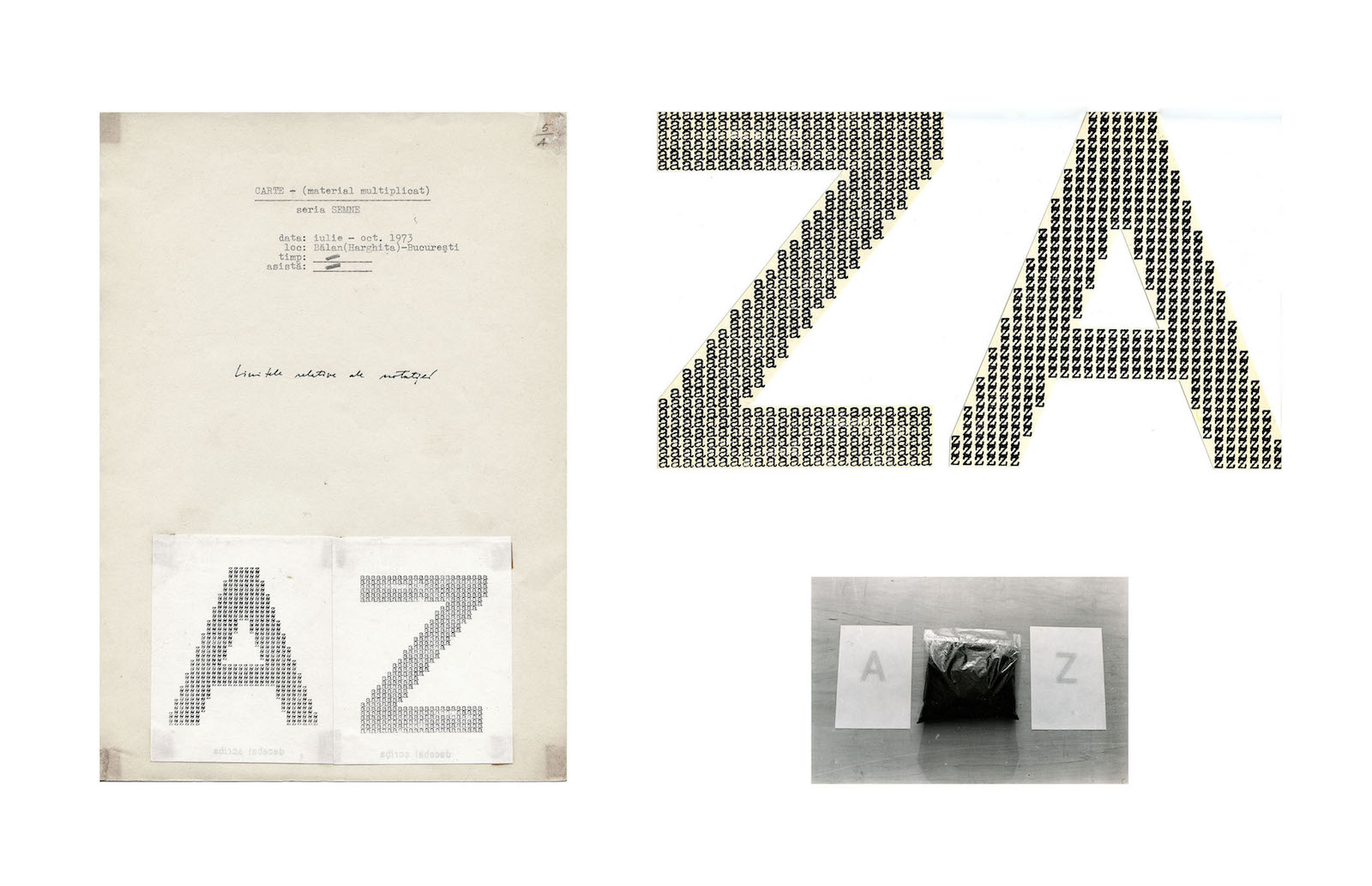
In the work Book (A-Z), each letter is made of its opposite letter, functioning as a revisited and enigmatic calligram, inviting to rethink language, its materiality and its limits. This work thus perpetuates a research around sign as well as around symbol, questionning the finitude of the human action and the creative process.

Image: 6 x 5 inch
Action II presents in a conceptual and performative work, an absurd situation where a man is climbing a ladder placed on the floor. This situation, to all appearances humorous is intended to reveal the absurdity of a system constraining artists to immobility.
Nowadays named performances, this type of artwork was called actions, which has undeniably a more powerful political connotation.
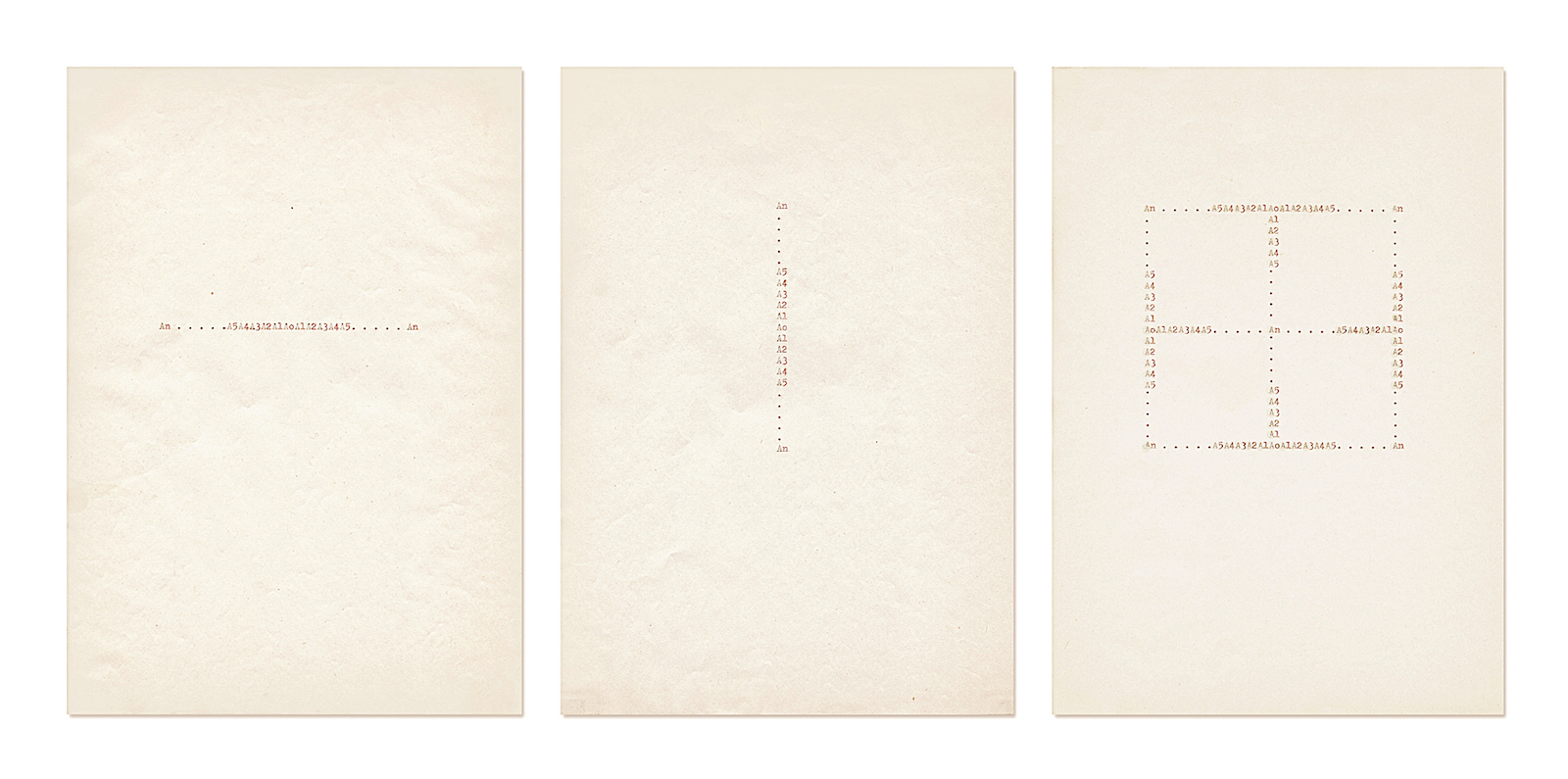
11,8 x 8,2 inch each
Vector sculptures is a series created from the result of reflections undertaken by the artist with a mathematician friend regarding mathematical philosophies. It is an attempt to link mathematical interpretations and plastic language by using vectors. These allow to virtually create volumes in space, in other words not to materialize the volume as such, but to suggest what it could have been.

30 x 21 cm (each)
Vector sculptures is a series created from the result of reflections undertaken by the artist with a mathematician friend regarding mathematical philosophies. It is an attempt to link mathematical interpretations and plastic language by using vectors. These allow to virtually create volumes in space, in other words not to materialize the volume as such, but to suggest what it could have been.
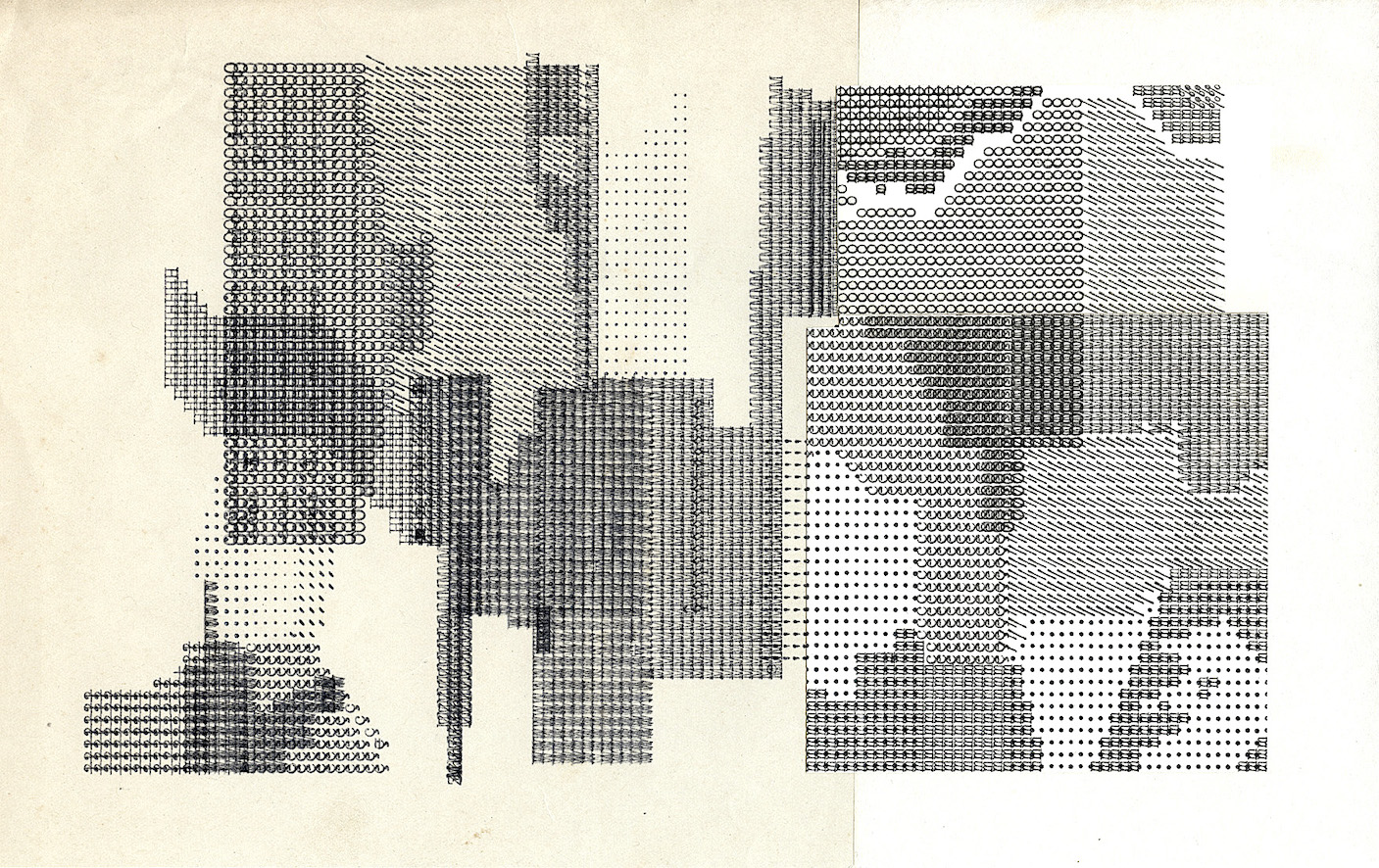
7,4 x 11,6 inch
Unconventional programmed paradigms 02 is an interdisciplinary work exploring philosophical and aesthetic issues. Through the influence of mathematics and self-generating grammar and by relying on concrete poetry, it questions the possibility of defining a fundamental unit for the aesthetic field: the aestheme. This neologism refers to the potentiality of finding a material which, like the atom constituting all things, would make it possible to conceive the entirety of other aesthetic forms.
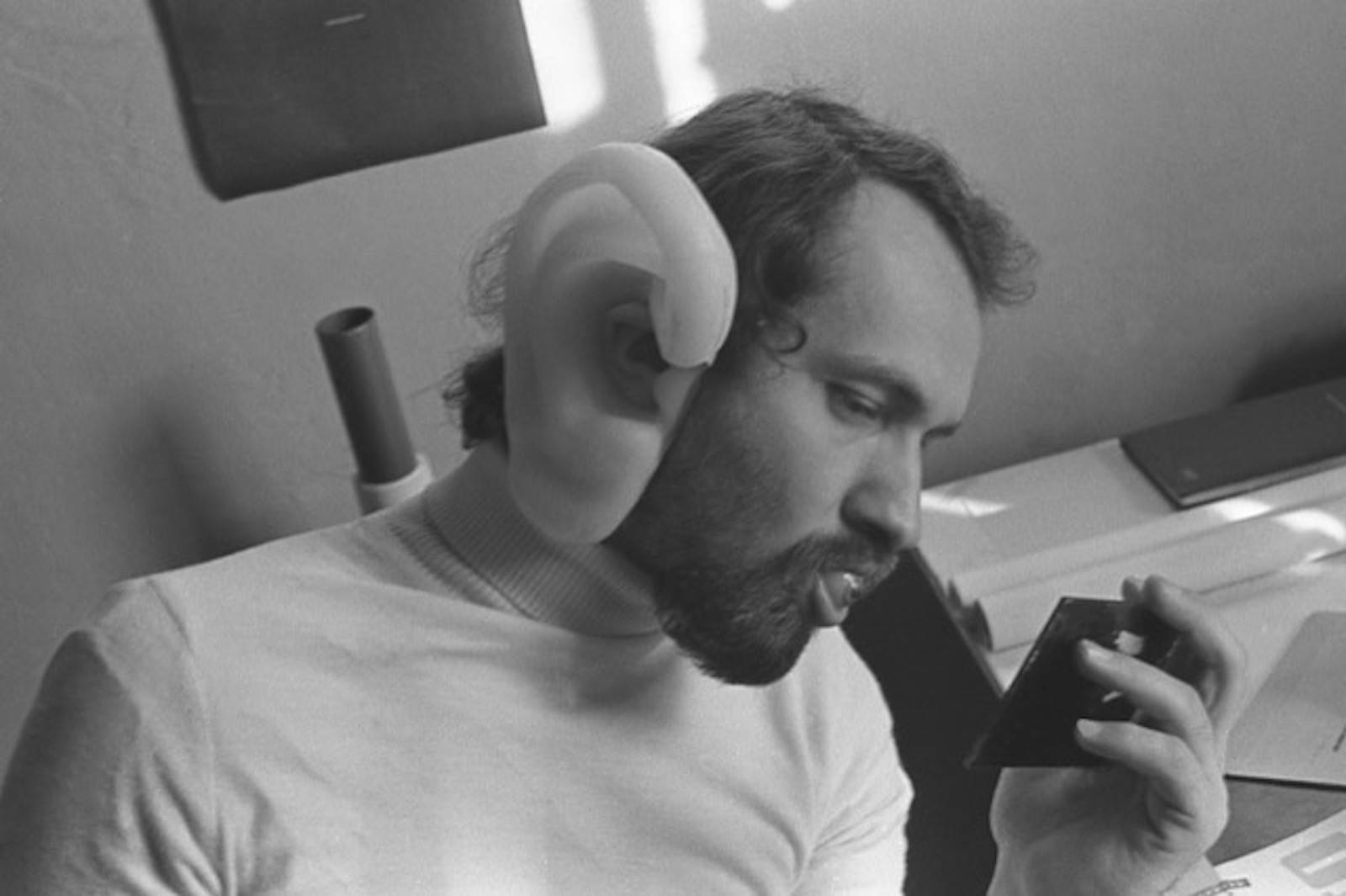
b&w gelatin silver print
Image: 11,8 x 17,7 inch
Frame: 50 x 70 cm
The "Masks"series is marked by a strong political dimension, staging symbolically the constraints generated against Romanian intellectuals in times of dictatorship, especially artists.
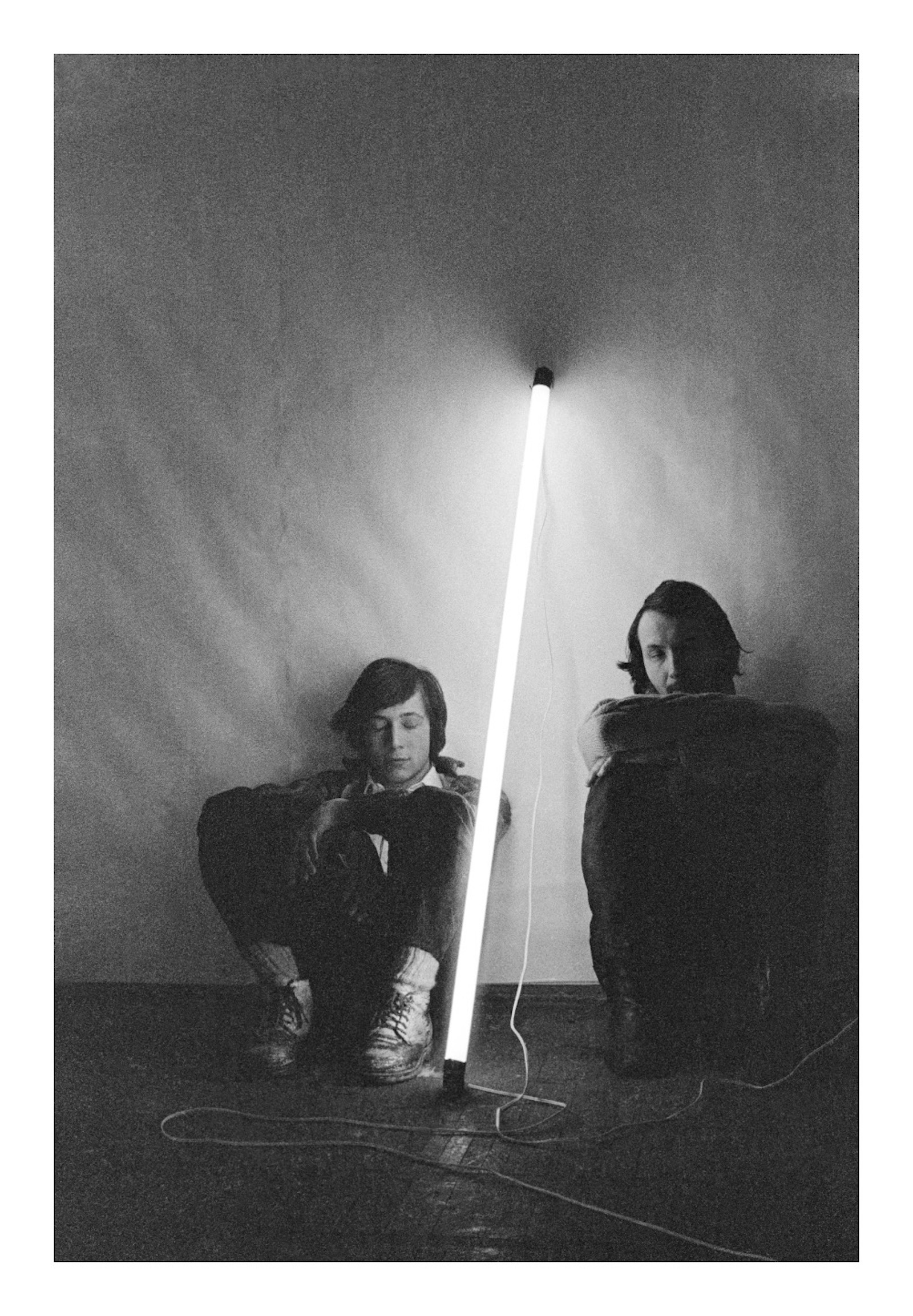
Image: 45 x 30 cm
Paper: 57 x 42 cm
Light Barrier is part of a series of photographic experiments by Decebal Scriba on the theme of light. With their eyes closed, sitting on the floor, simultaneously united and separated in the artificial atmosphere created by the lighting of a fluorescent tube, the two characters imagine themselves to be the guardians of light in a context of darkness.
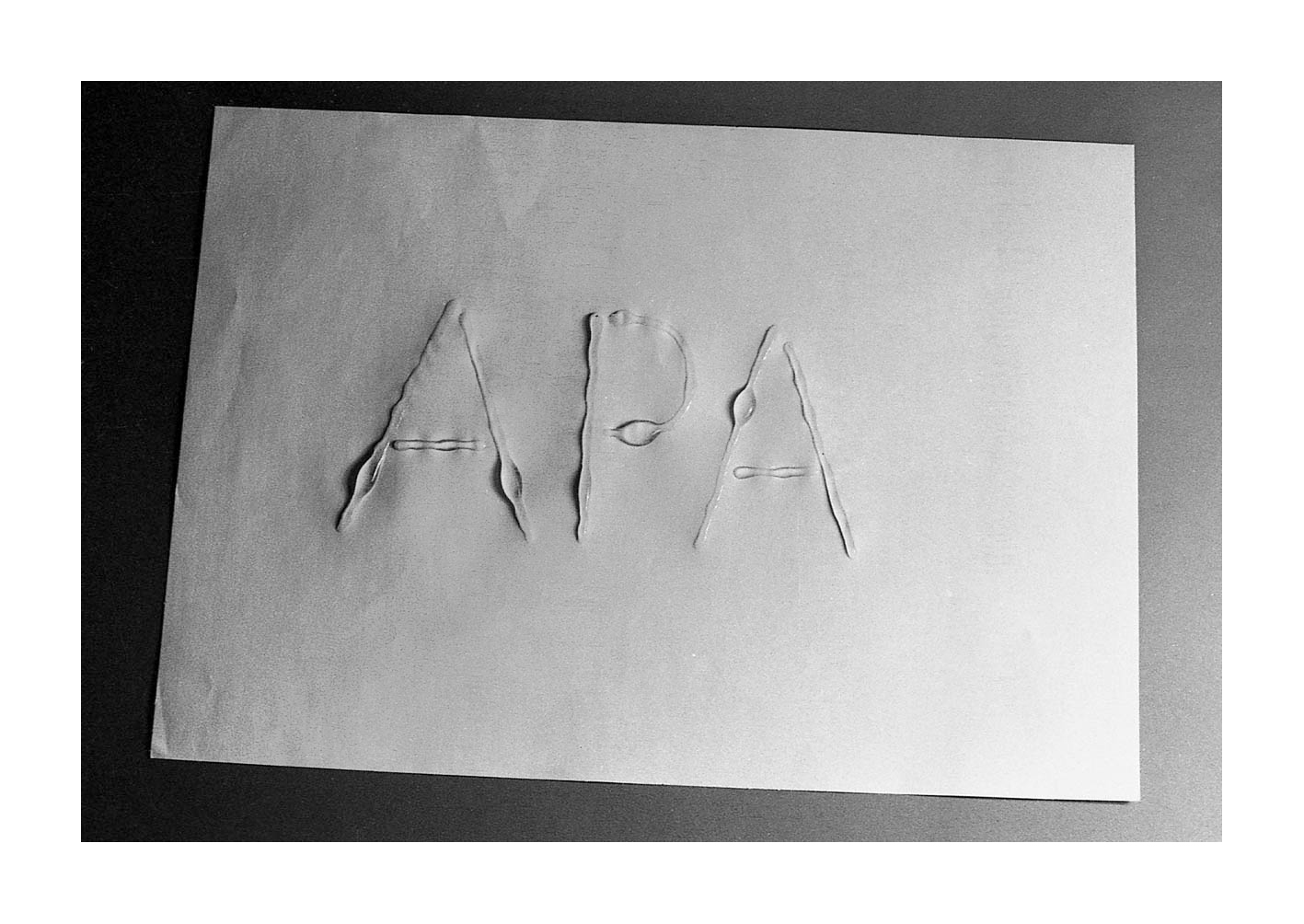
Image: 15,7 x 23,6 cm
Frame: 22,4 x 28 inch (framed)
In this photograph, the apa palindrome dually reflects to water, in its meaning as well as its composition: the word apa means water in Romanian, and the latter has been used to draw the word. This artwork proceeds to unify a referent and its signification, following on from conceptual work of Decebal Scriba aiming to question, transform and redefined connexions between mental image of the object and its referent item.
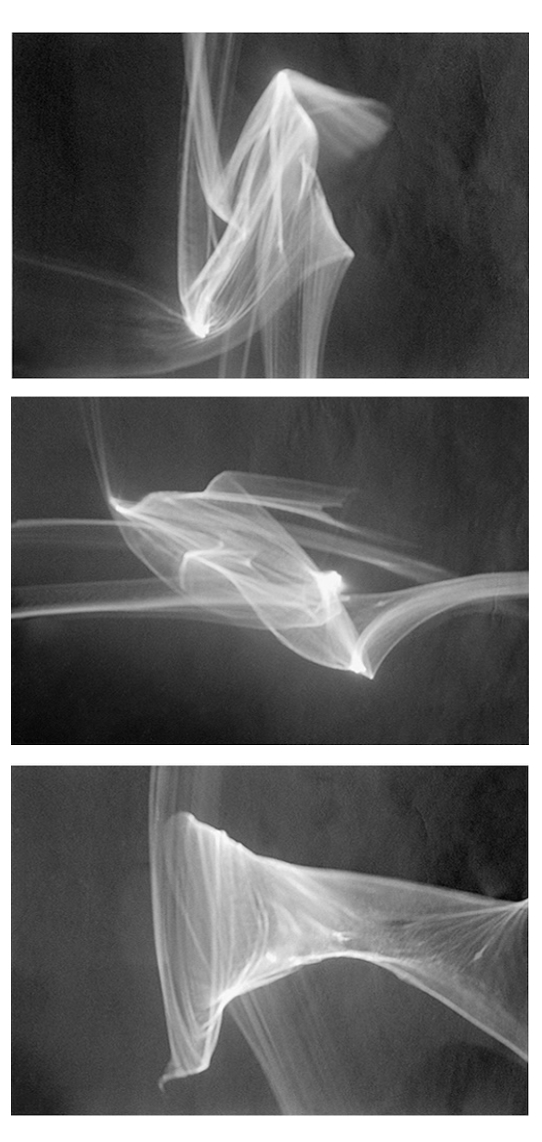
Image: 30 x 45 cm (each)
Frame: 114,5 x 59,5 cm
Lucidograms proposes a study of light, already presented in Liquid Matrix, Mirror series, Axis or Labyrinth. The artist used metallized plastic foil, and played with its reflection on the wall to create and capture patterns. The richness of the repertory of forms is obtained through the distortion of the shelf, reflecting its distance from the wall, and recalling complex mathematical models to some extent.
Living in Fontainebleau-Avon since 1991, Decebal Scriba (b. 1944) is a romanian artist approaching media such as photography, installation, performance and video art, with sustained activity in the sphere of conceptual art, in which he also integrates his preoccupation with drawing.
He has exhibited in Romania starting with 1974, participating in notable group exhibitions: "Situatie si concept" [Situation and concept], Atelier 35, Bucharest (1974); "Fotografie si film experimental" [Photography and experimental film], House of Art, Bucharest (1979); "Scrierea" [Writing], Institute of Architecture, Bucharest (1980); "Spatiu-Obiect" [Space-Object], Institute of Architecture, Bucharest (1982); "Spatiul-Oglinda" [Space-Mirror], Institute of Architecture, Bucharest (1986); "Experiment în arta româneasca dupa 1960" [Experiment in Romanian art after 1960], National Theater, Bucharest (1996). During the communist regime, he participated in several projects abroad, between 1973 and 1988, which encouraged art by correspondence, or so-called 'mail-art', such as "Objeto de Interferencia", Sao Paulo (1985) or the ecological project "Messagio Terra", Milan (1983). Along with Nadina Scriba and with the participation of a group of friends, he initiated the document video project "House pARTy", editions I and II, between 1987 and 1988, in Bucharest.
After 1990 he participated in the exhibitions "When History Comes Knocking: Romanian Art from the 80s and 90s in Close Up", curated by Judit Angel, at the Plan B Gallery in Berlin (2011) and "The Poetics of Politics", curated by Olivia Nitis, Propaganda Gallery, Warsaw (2012). In 2015 he opens his first personal exhibition at the Victoria Art Center, Bucharest, followed by his second, in 2016, at the Calina Gallery in Timisoara, both curated by Olivia Nitis. He contributed to the exhibition "Situations and Concepts", curated by Magda Radu, organized in 2017 at the Project Salon in Bucharest and participated at the "Life - A User's Manual", Contemporary Art Biennale Art Encounters - Timisoara, 2017, curated by Ami Barak and Diana Marincu. His first solo show in France took place at the gallery in 2019.